Best GoPro camera 2025: the finest models you can buy at all price points
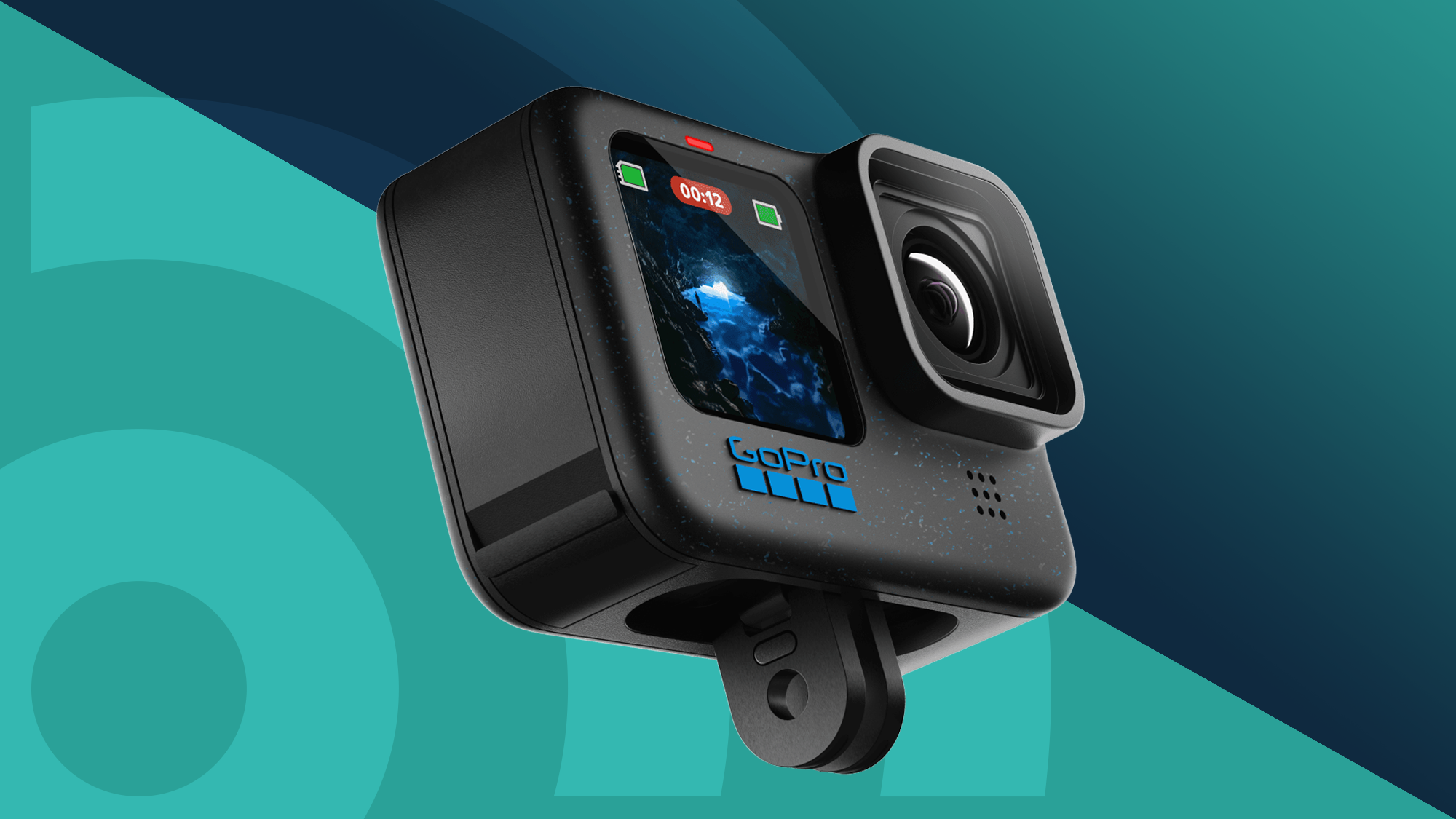
Our experts have tested every GoPro since the HD Hero2 back in 2012. Things have changed a lot since then: the best GoPro action cameras in 2025 shoot sharper, smarter and steadier than ever. Because we’ve reviewed every GoPro along the way, we know exactly what sets the best ones apart. We’ve distilled that know-how here, to help you choose your ideal GoPro.
The Hero 13 Black shows just what the latest GoPro cameras are capable of. The flagship model builds on a proven formula, shooting clear 5.3K footage. In testing, we welcomed the addition of auto-detected Lens Mods and ND filters, plus better battery life and GPS. We think it’s the most complete GoPro you can buy.
That said, there’s an option in the GoPro line-up for every buyer and budget. We’ve tested them all and distilled the results below. We’ve included sample footage for each GoPro, shot by our team to give you a real view of the video quality each camera is capable of. Because we test each camera first-hand, you know our recommendations be can be trusted.
Top 3 picks
If you don’t have time to read our full list of the best GoPro cameras, you can use the quick round-up below for a shortcut to the top options. When you find one that fits your needs and budget, the links beneath each entry will take you to our full write-up.
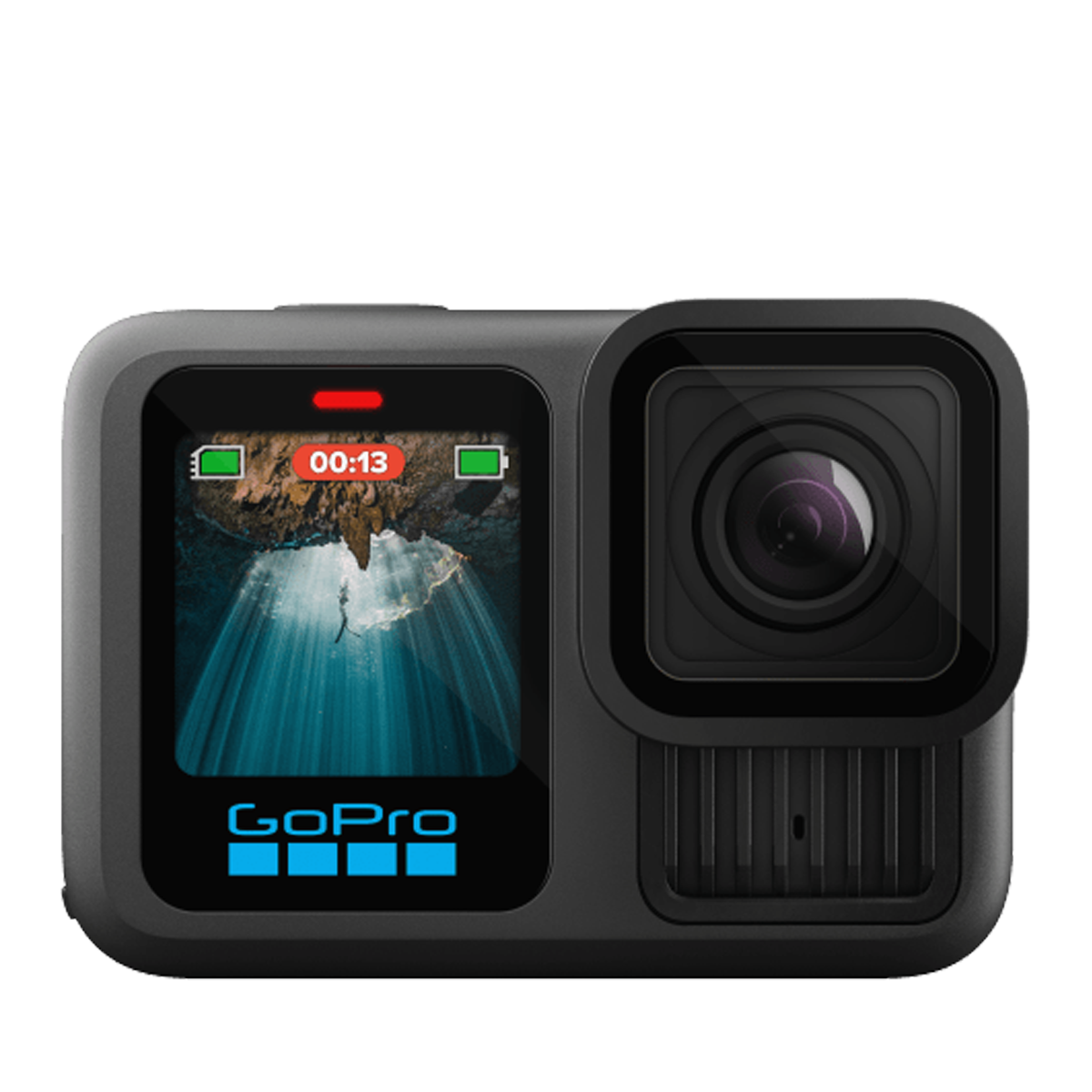
The best GoPro overall
An iterative upgrade, still with 5.3K video, but with better battery life, the return of GPS and innovative new Lens Mods.
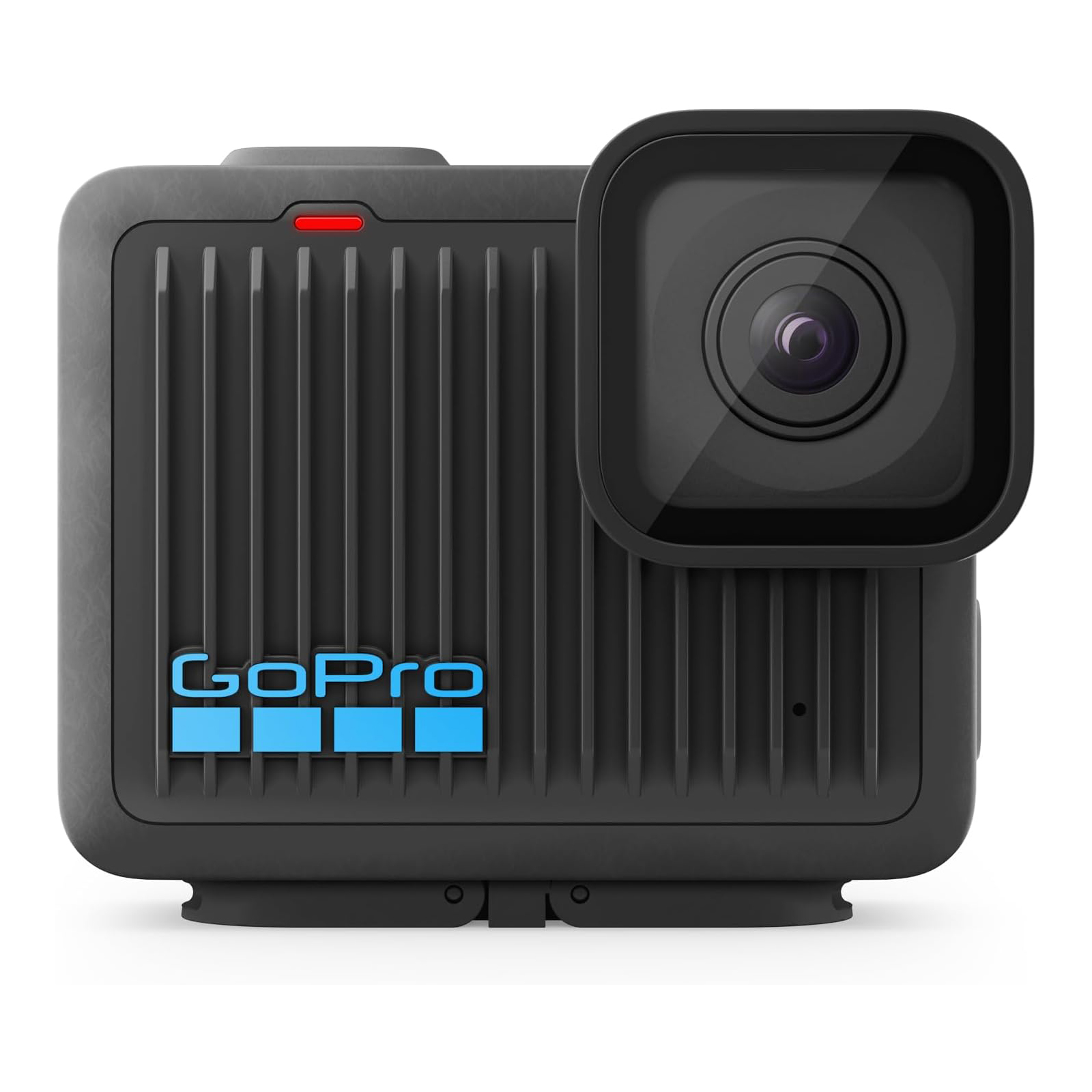
The best beginner GoPro
The baby GoPro weighs just 86g and is stripped back to the basics with simple video, photo and slow motion modes.
Pros
- Superb range of accessories, including new auto-detected Lens Mods
- Improved battery life and heat dissipation
- Excellent-quality 5.3K video
- Decent Quik app for quick edits
Cons
- Sensor and video resolution unchanged from predecessor
- Image quality of Insta360 rival remains better in low light
- Processing time needed for slow-mo videos
- Additional cost of Lens Mods adds up
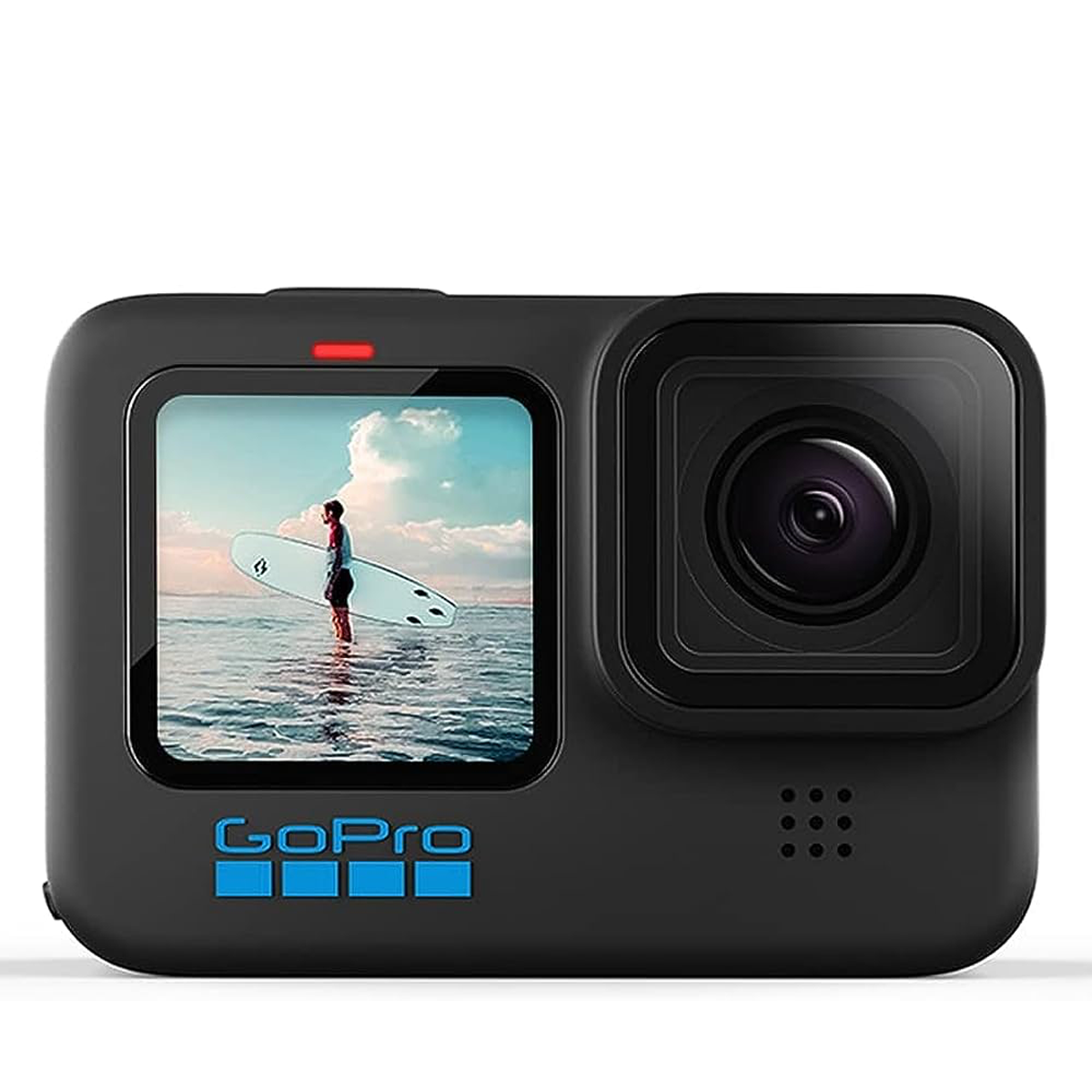
The best value GoPro
No longer the flagship, the Hero 10 Black remains a cracking buy, with a powerful GP2 processor, 4K at 120fps and class-leading stabilization.
Pros
- Dual cameras
- Excellent wind resistance
- Generous 46-minute flight time
- Already excellent safety features improved further
Cons
- C1 European rating
- Fixed aperture is bad news for ND filter users
- Large protruding camera likely to suffer in case of accidents
Best by use-case
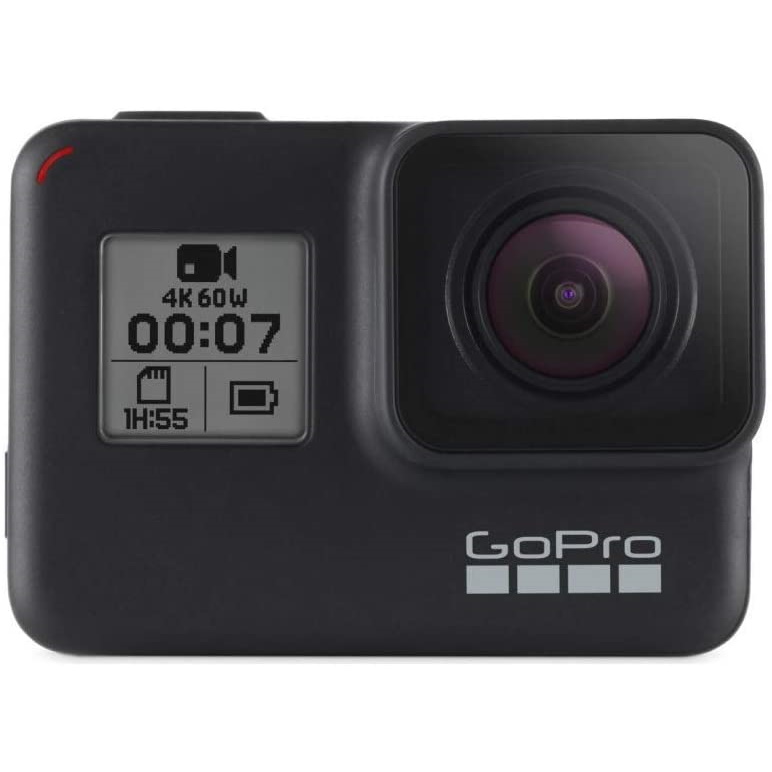
The cheapest GoPro
A few years old, the most affordable GoPro model offers great value, with excellent 4K video quality and HyperSmooth stabilization.
Pros
- Beautiful design
- Useful vari-angle touch screen
- A well-struck balance of old and new
- Great value
Cons
- Needs more native lenses
- Grip less suited to large lenses
- No UHS-II support
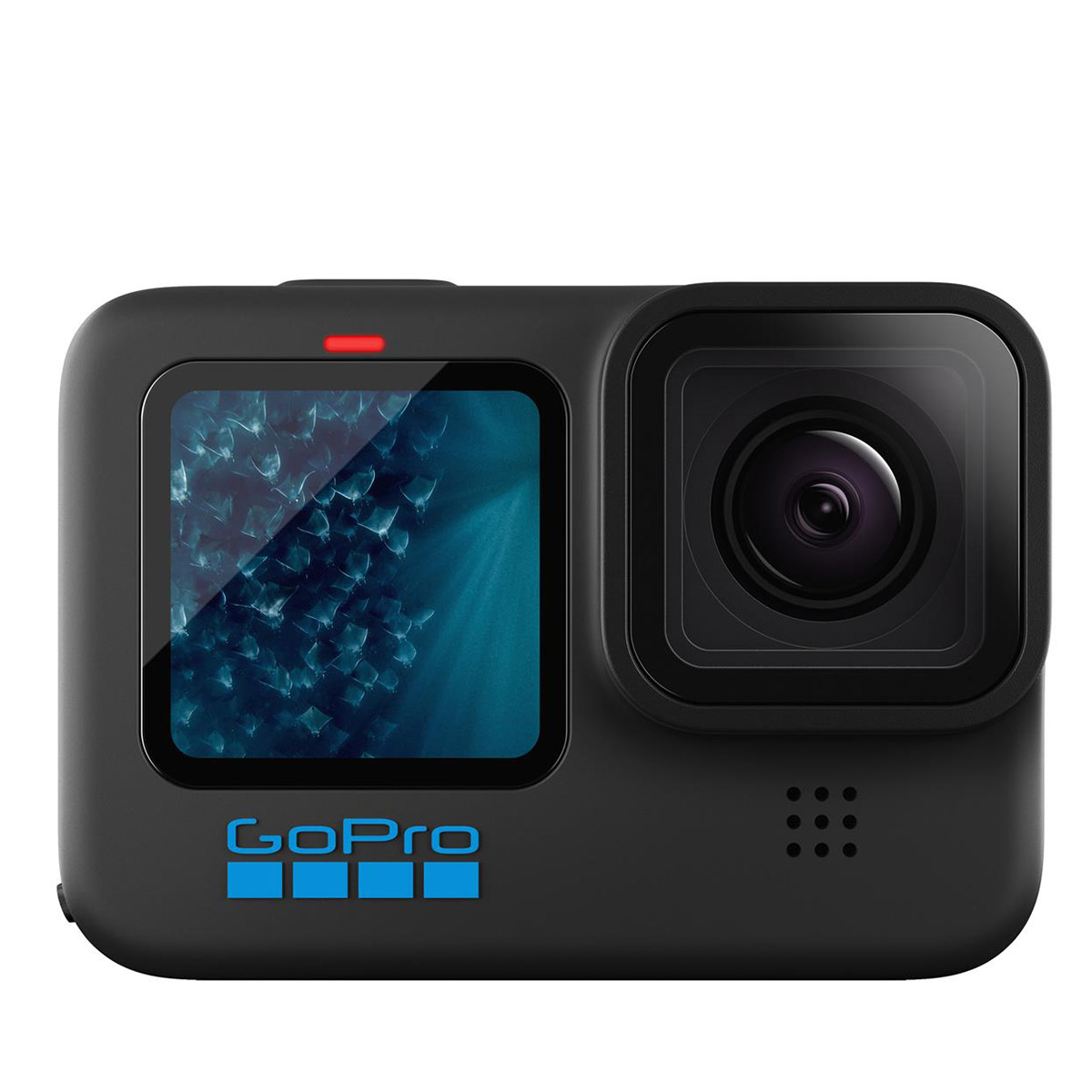
The best for creators
The first GoPro with an 8:7 sensor that's better for cropping vertical videos, the Hero 11 Black remains an excellent choice for social content creators.
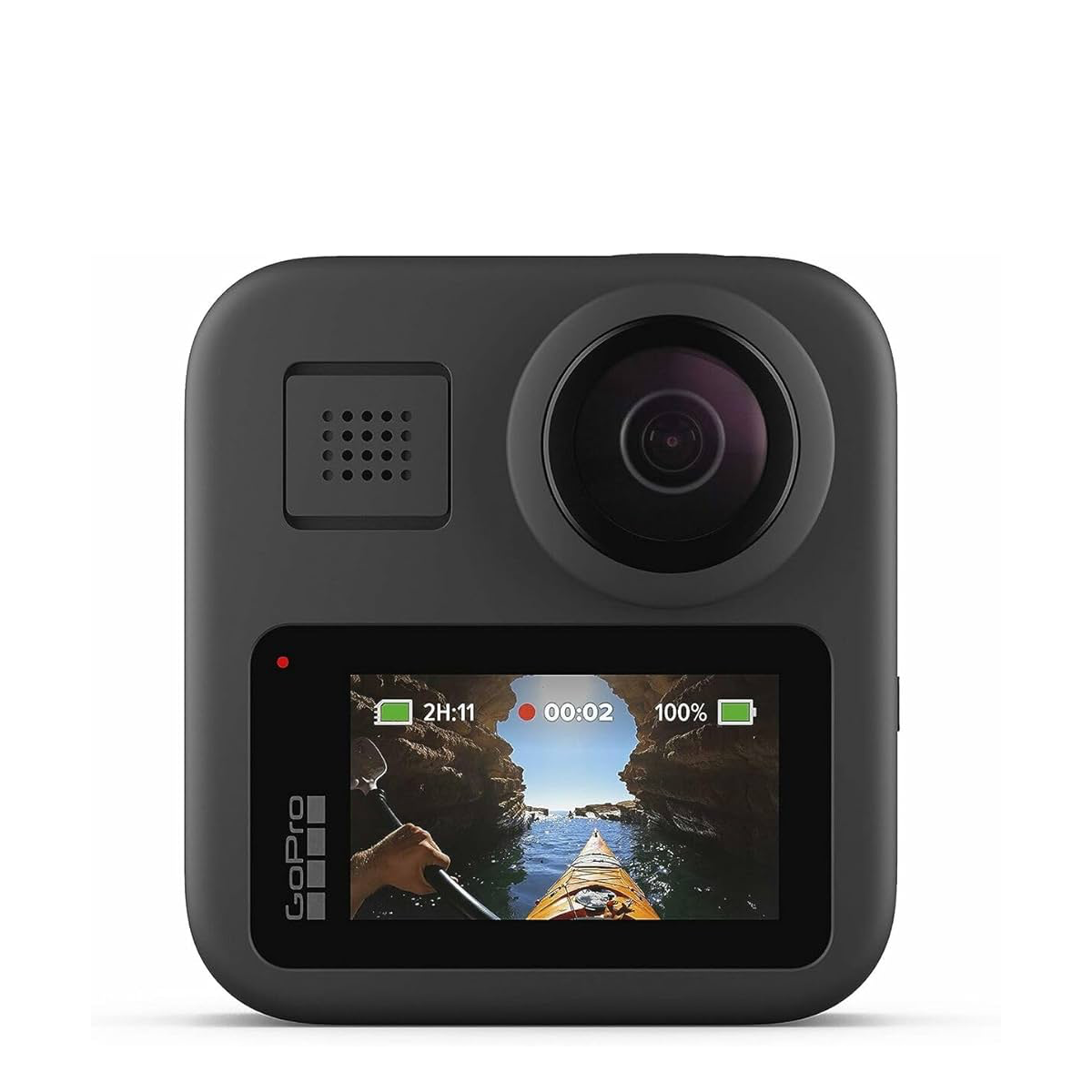
The best 360-degree GoPro
The GoPro Max makes 360 action cam footage easy to turn around. Amazing 5.6K 360 degree video, on-camera stitching and it fits on existing mounts.
Pros
- Internally stacked zoom lens
- Raw shooting is a bonus
- Video up to 4K resolution
- Intuitive to use
Cons
- Image quality and LCD display suffer in bright conditions
- No eye-level viewfinder
- Quality reduced at longer focal lengths
- Small sensor at its heart

Tim is TechRadar's Cameras editor, with over 15 years in the photo video industry and most of those in the world of tech journalism. He says, "The original action camera, GoPro's action cameras continue to set the standard for recording sharp, smooth video in a range of conditions. Their flagship Hero models have long been the benchmark. Because of this, if you don't need the very latest features, you can save money by choosing a GoPro from a few generations ago."
Best GoPro specs compared
Running the numbers in your head can be difficult. To help you make sense of what the best GoPro action cameras offer on paper, we’ve set out the specs for our top three models side-by-side in the table below. Specs only tell half the story though, so be sure to read our in-depth review of each GoPro to get the full picture.
| Row 0 - Cell 0 | GoPro Hero 13 Black | GoPro Hero (2024) | GoPro Hero 10 Black |
Price | $399 / £399.99 / AU$649.95 | $199.99 / £199.99 / AU$349.99 | $249.99 / £249.99 / AU$429.95 |
Max. video resolution | 5.3K/60fps | 4K/30fps | 5.3K/30fps |
Max. photo resolution | 27MP | 12MP | 23MP |
Slo-mo | 2.7K/240fps | 2.7K/60fps | 2.7K/240fps |
Stabilization | HyperSmooth 6.0 | None (in-camera) | HyperSmooth 4.0 |
Waterproof | 10m | 5m | 10m |
Battery | 1900mAh | 1125mAh | 1720mAh |
Weight | 159g | 86g | 153g |
The best GoPro cameras 2025
Why you can trust TechRadar
Below you'll find full write-ups for each of the best GoPro's in our list. We've tested each one extensively, so you can be sure that our recommendations can be trusted.
Best GoPro overall
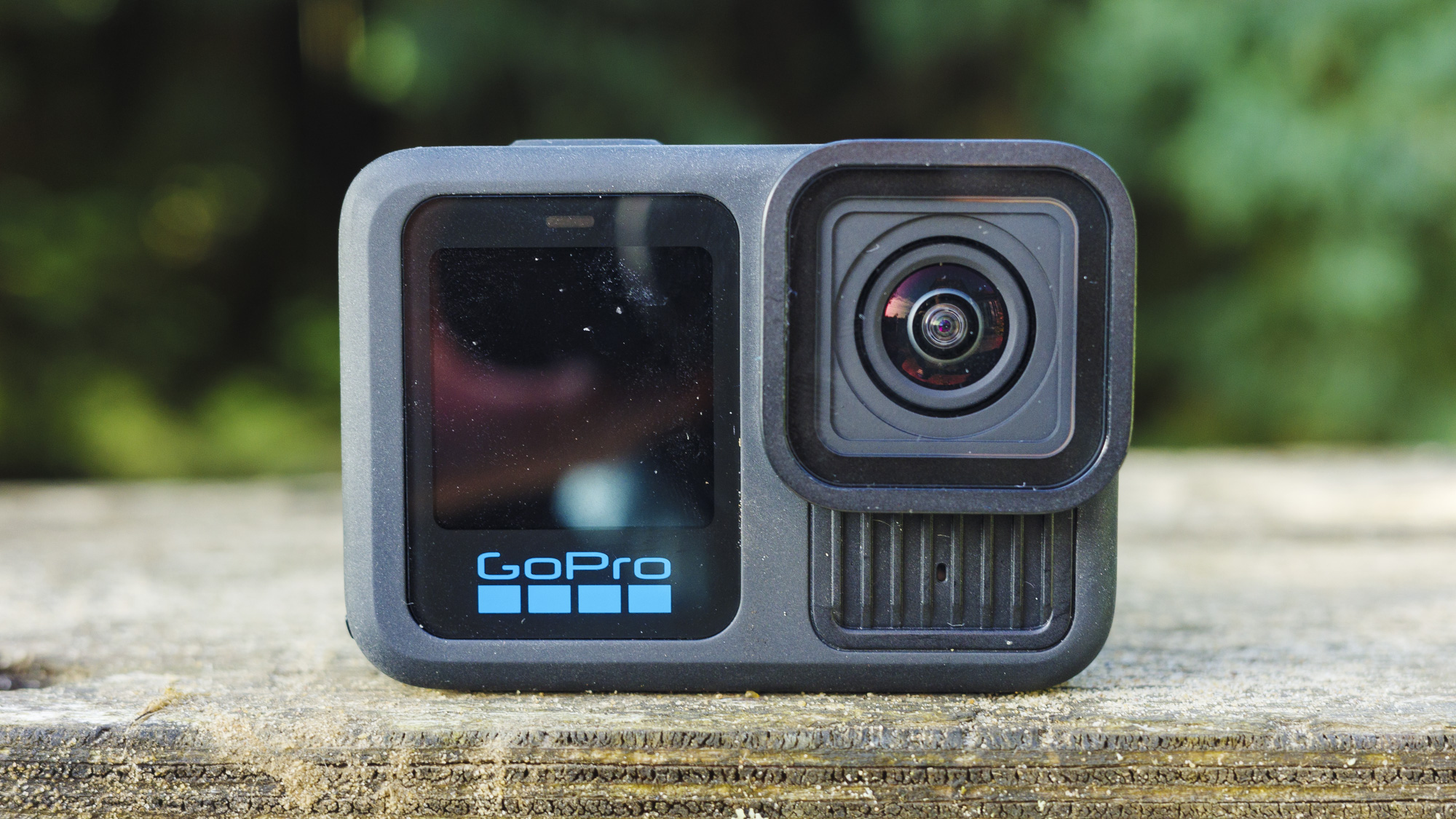
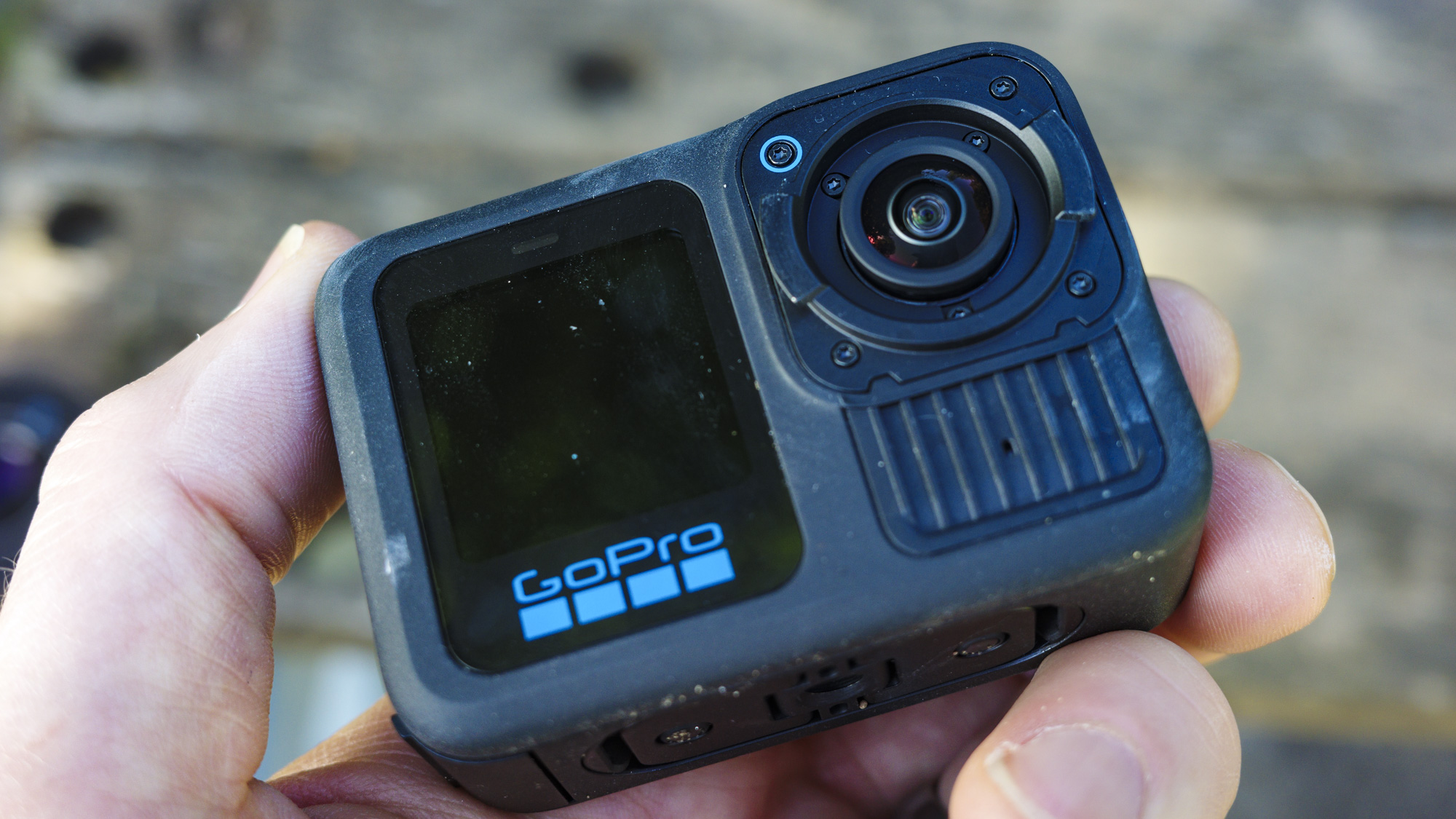
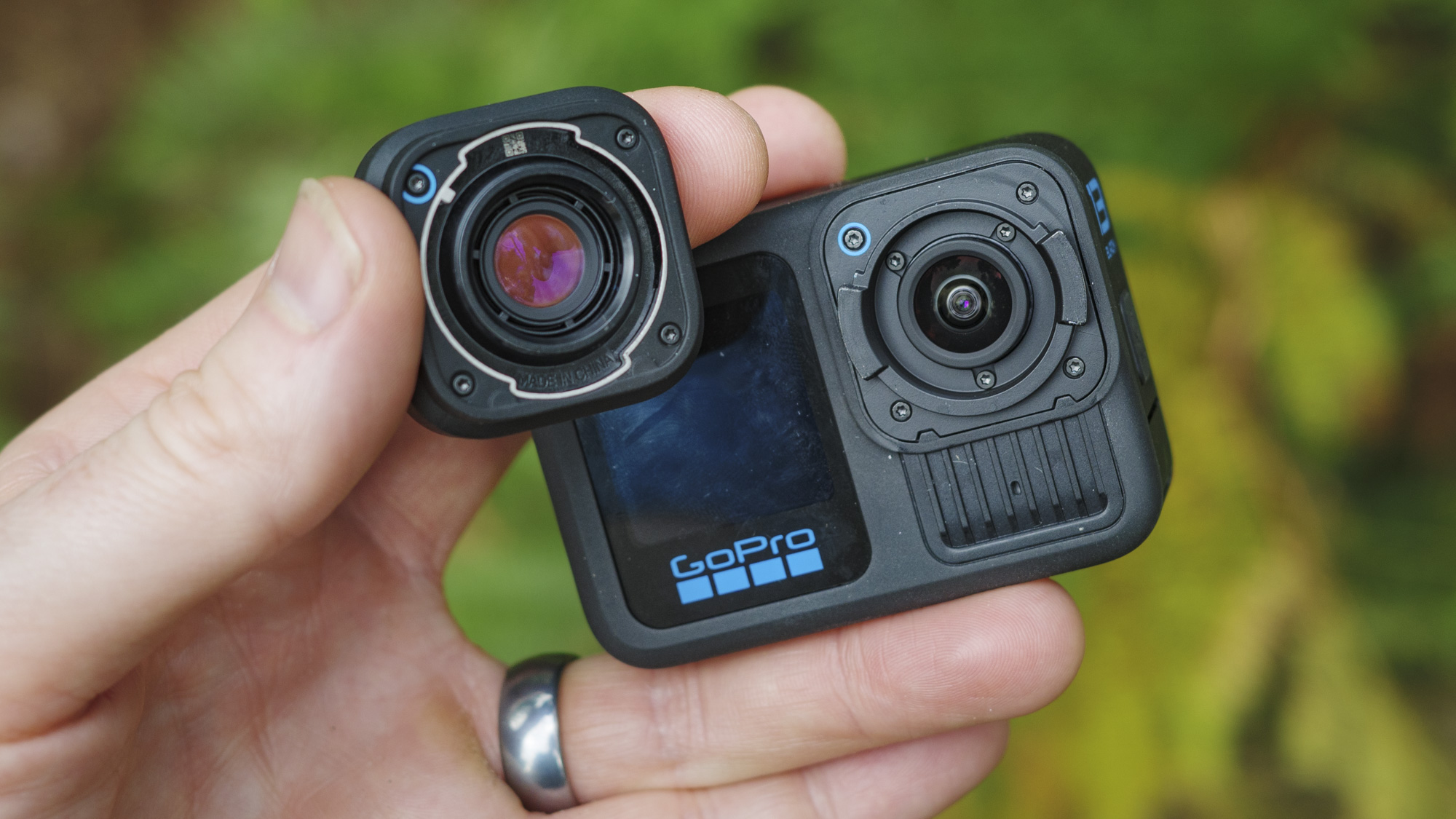
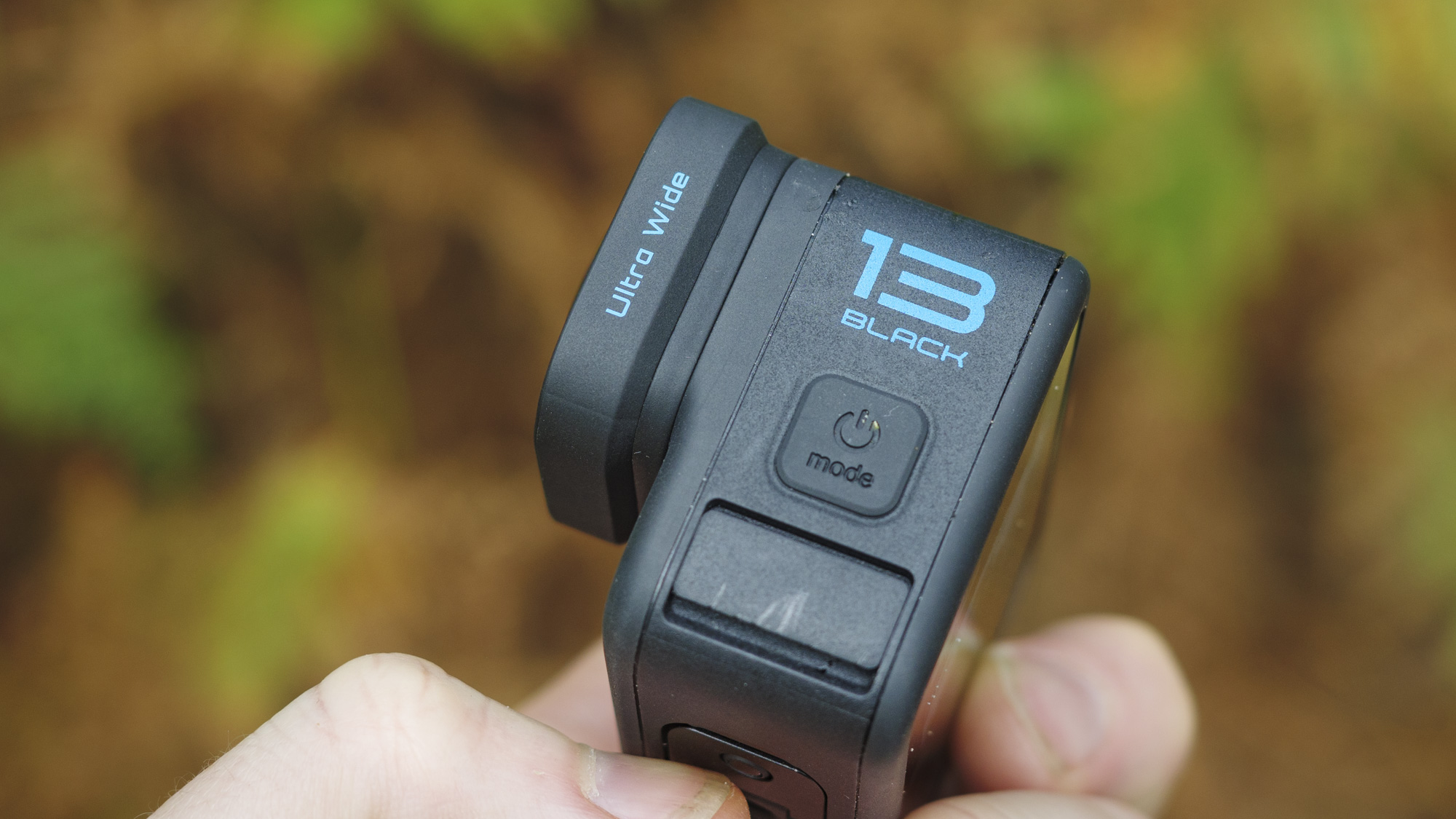

Specifications
Reasons to buy
Reasons to avoid
GoPro Hero 13 Black sample video
✅ You want GoPro's best action cam: Iterative update of the Hero 12 Black boasts better battery life, slow-mo modes, new auto-detected Lens Mods and ND filters, plus the return of GPS.
✅ You want a cinematic video camera: Those new Lens Mods combine with powerful slow-mo modes and new color profiles that filmmakers will appreciate.
❌ You don’t want to spend a lot: The new Lens Mods are a big selling point but they are costly optional extras, and previous GoPros are better value.
❌ You're upgrading from the Hero 12 Black: The Hero 13 Black is just an iterative update with the same sensor as it predecessor.
Once again, GoPro's latest flagship, the Hero 13 Black, is just a minor upgrade from its predecessor, in this case the Hero 12 Black. It features the same 8:7 aspect 1/1.9-inch sensor, 5.3K video resolution, superb HyperSmooth stabilization to smooth out your clips, and pretty much the same design, including the same 33ft / 10m waterproofing specs. In fact, you'll find all of this in the Hero 11 Black too. If you already own either of those excellent action cameras, it's probably not worth considering upgrading to the Hero 13 Black, at least according to the specs. However, perhaps you shouldn't write the Hero 13 Black off – a few tweaks have in fact made a sizeable difference.
There's the small updates that include improved Slo-Mo video modes, with options ranging from 5.3K / 120fps to 720p / 400fps. Our in-depth testing found these modes a little niche – record times are limited while processing time of those sequences. Then there's the much needed improved battery life and heat dissipation that extend record times, the introduction of magnetic mounting (finally), plus the return of GPS with performance sticker overlays – a welcome addition compatible with devices from the likes of Garmin. However, it's the new auto-detected HB-series of Lens Mods and ND filters that really stands out. Unique to the Hero 13 Black, the camera optimizes camera settings when it detects a new mods is attached, and includes a handy Macro Lens Mod plus an Anamorphic Lens Mod in the pipeline for 2025. These are costly extras, but they open the Hero 13 Black up to a host of new users. DJI and Insta360 might be making up more action camera ground than GoPro, but the Hero 13 Black is a polished flagship that remains our top pick for now.
Read our in-depth GoPro Hero 13 Black review
Best beginner GoPro
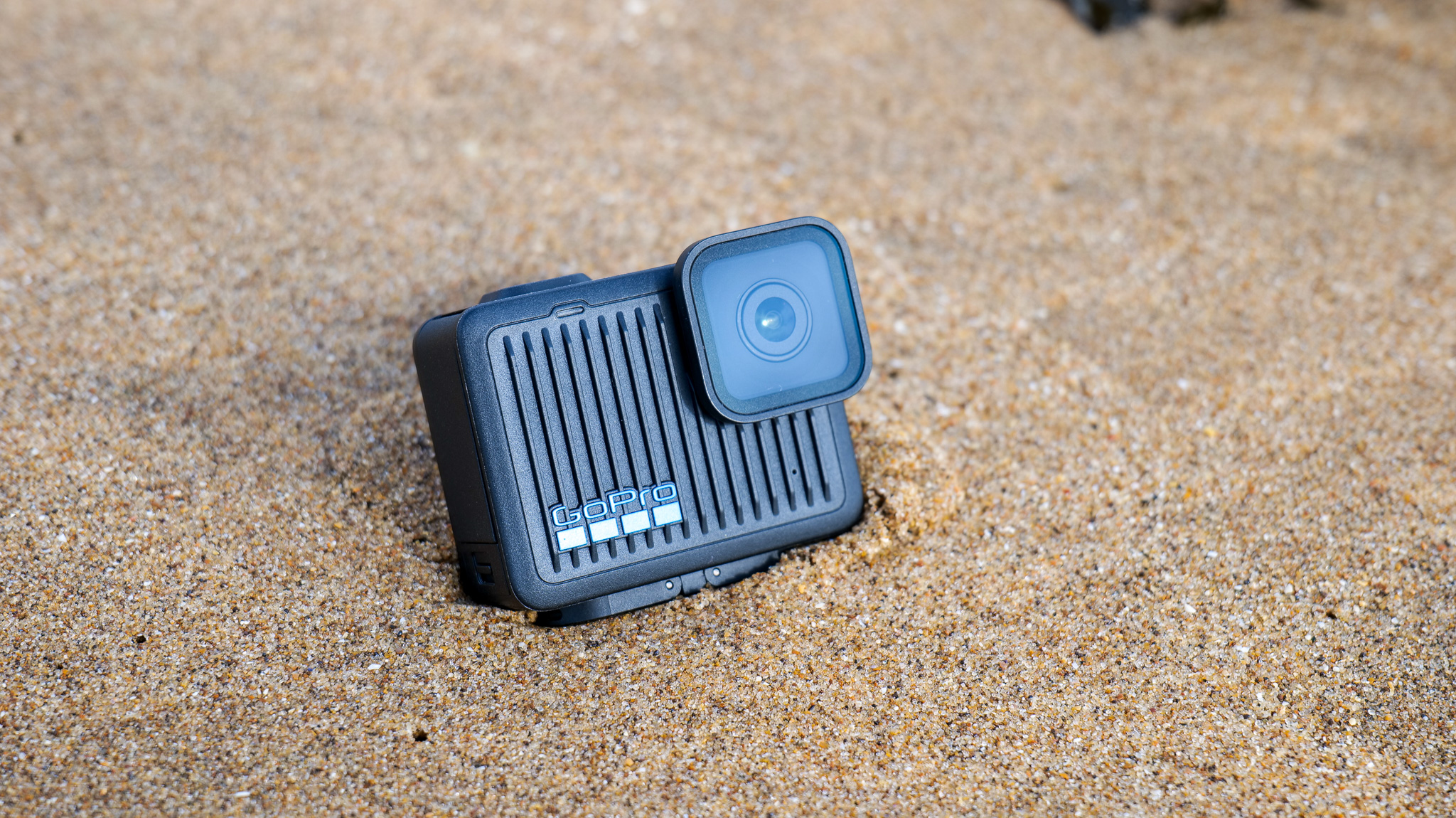
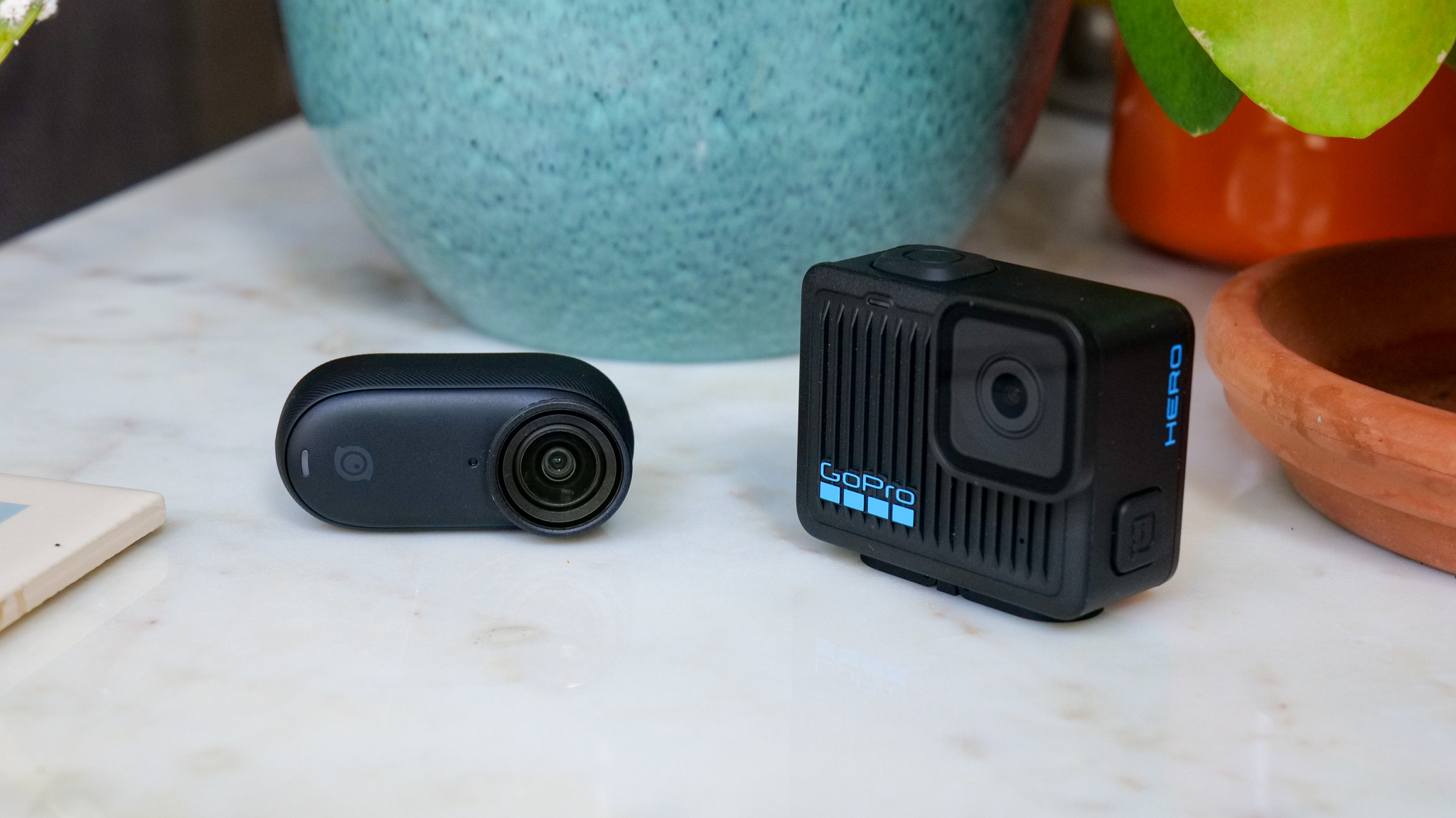
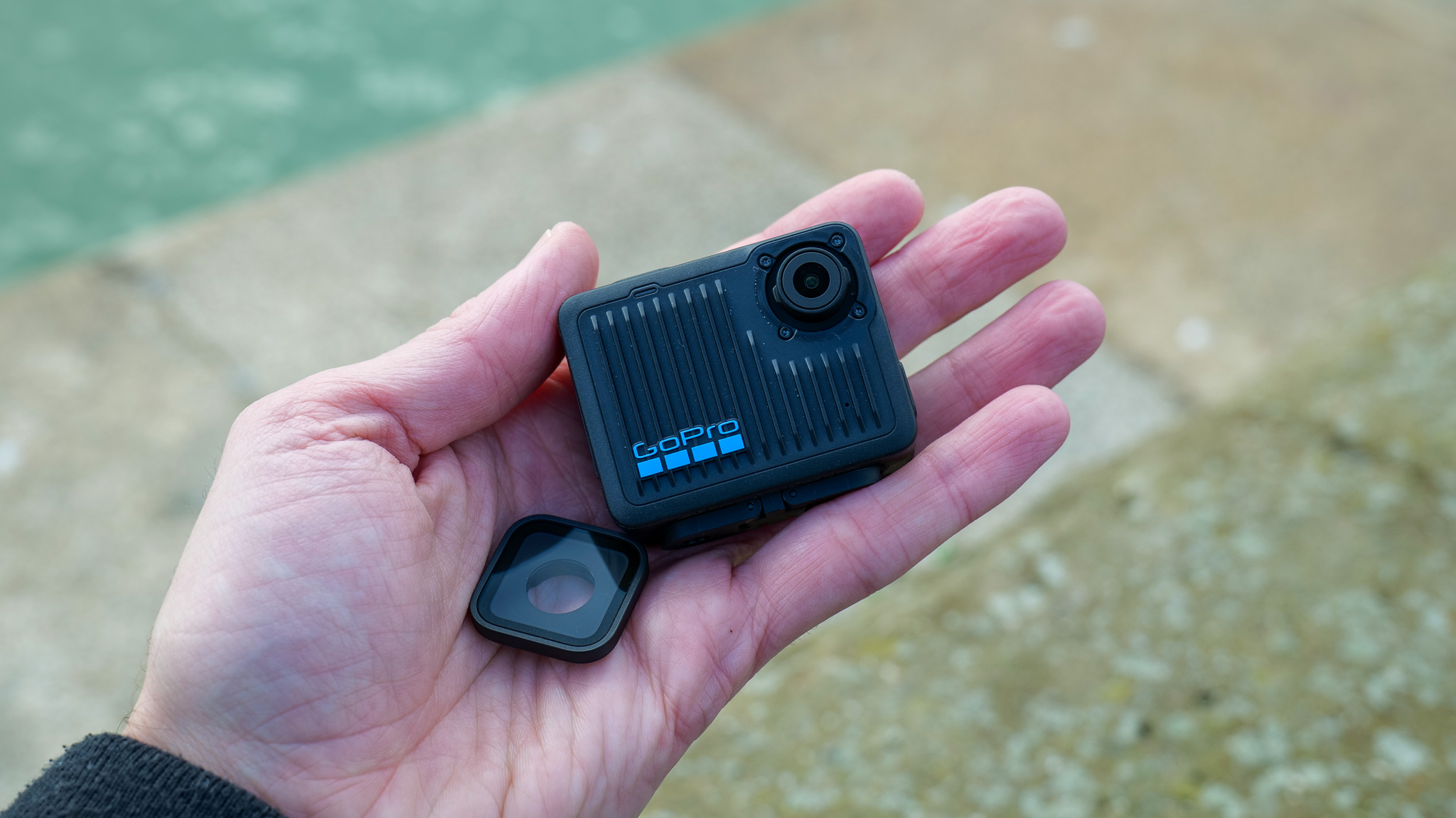
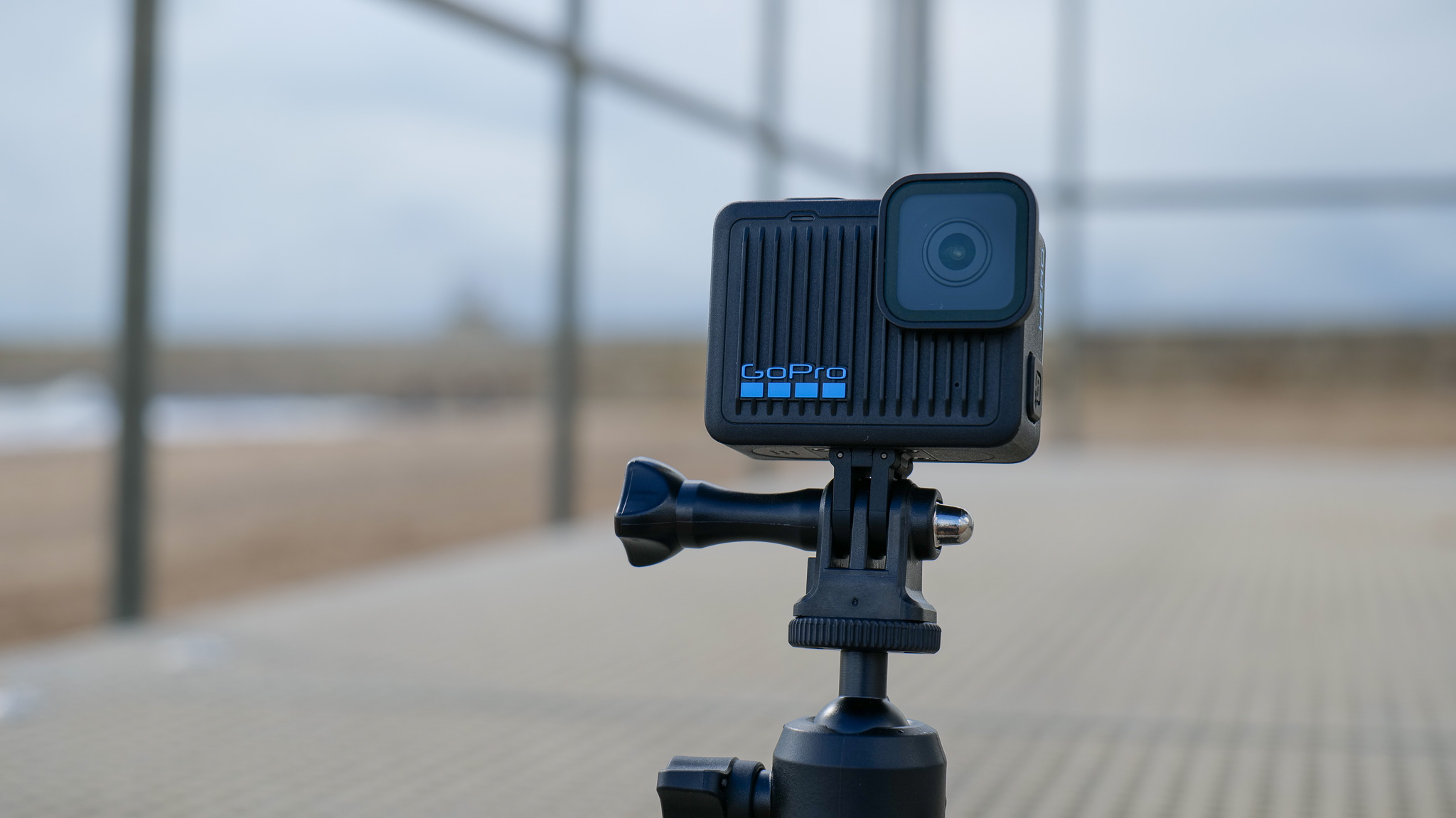
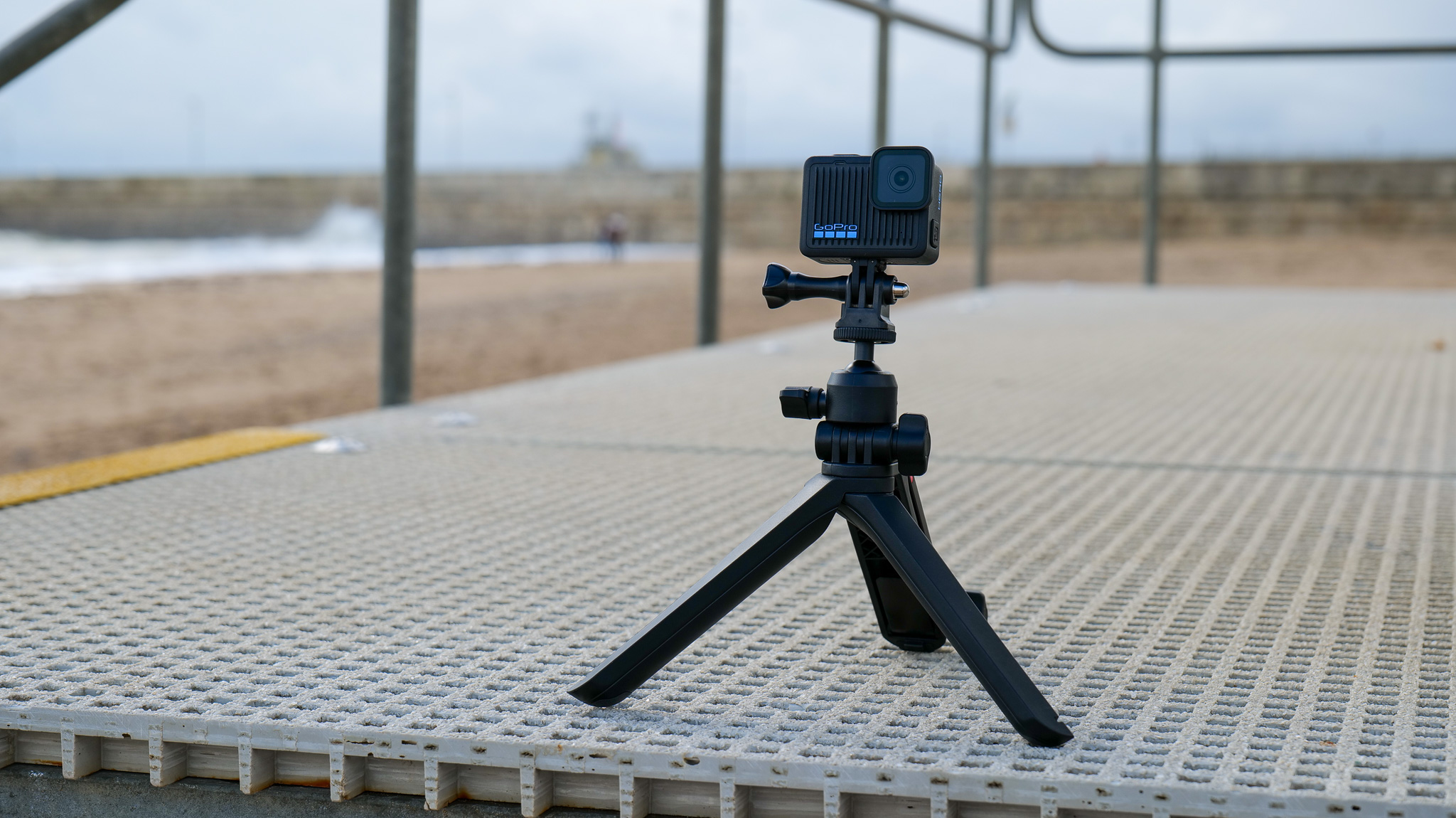
Specifications
Reasons to buy
Reasons to avoid
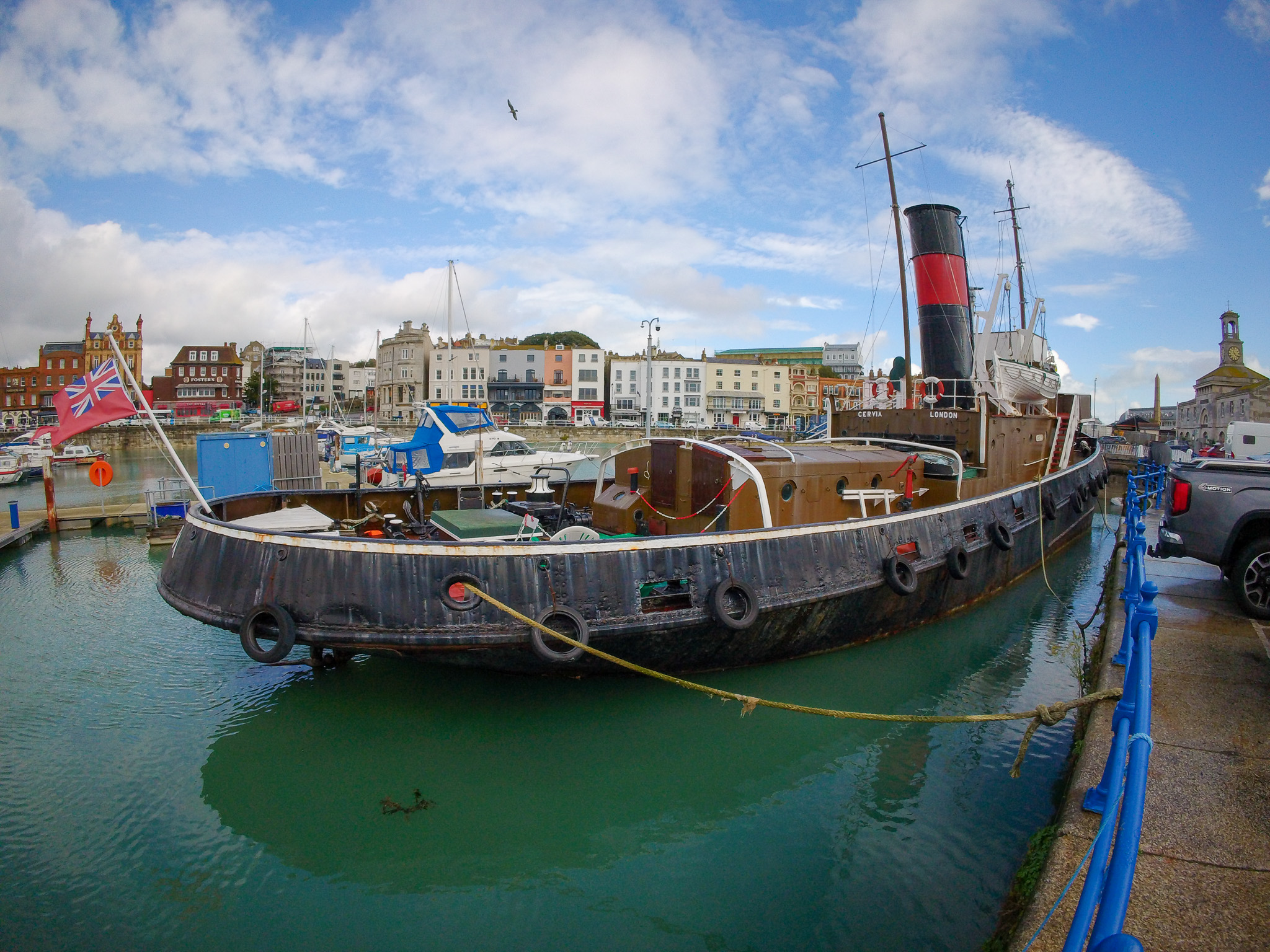

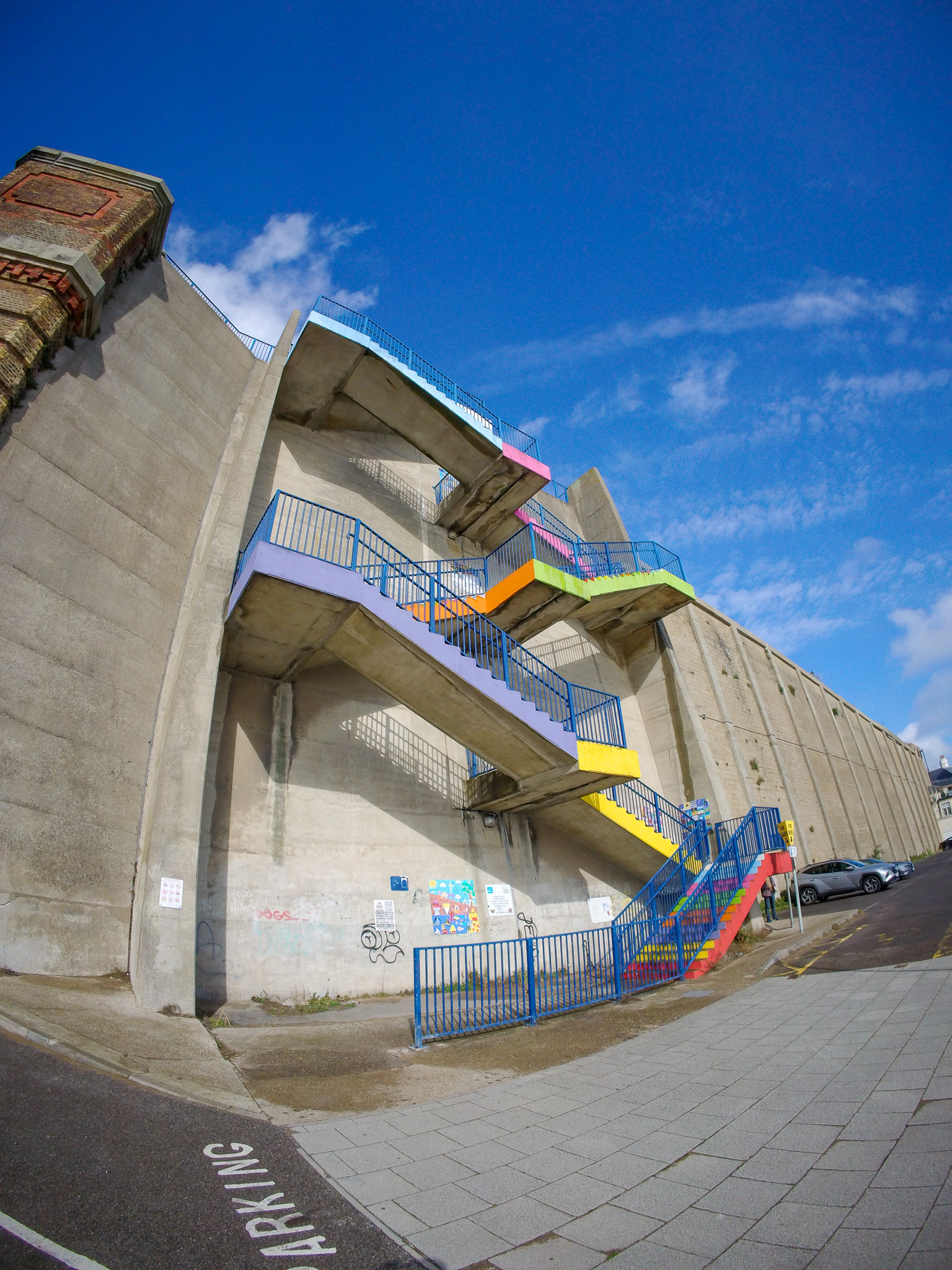
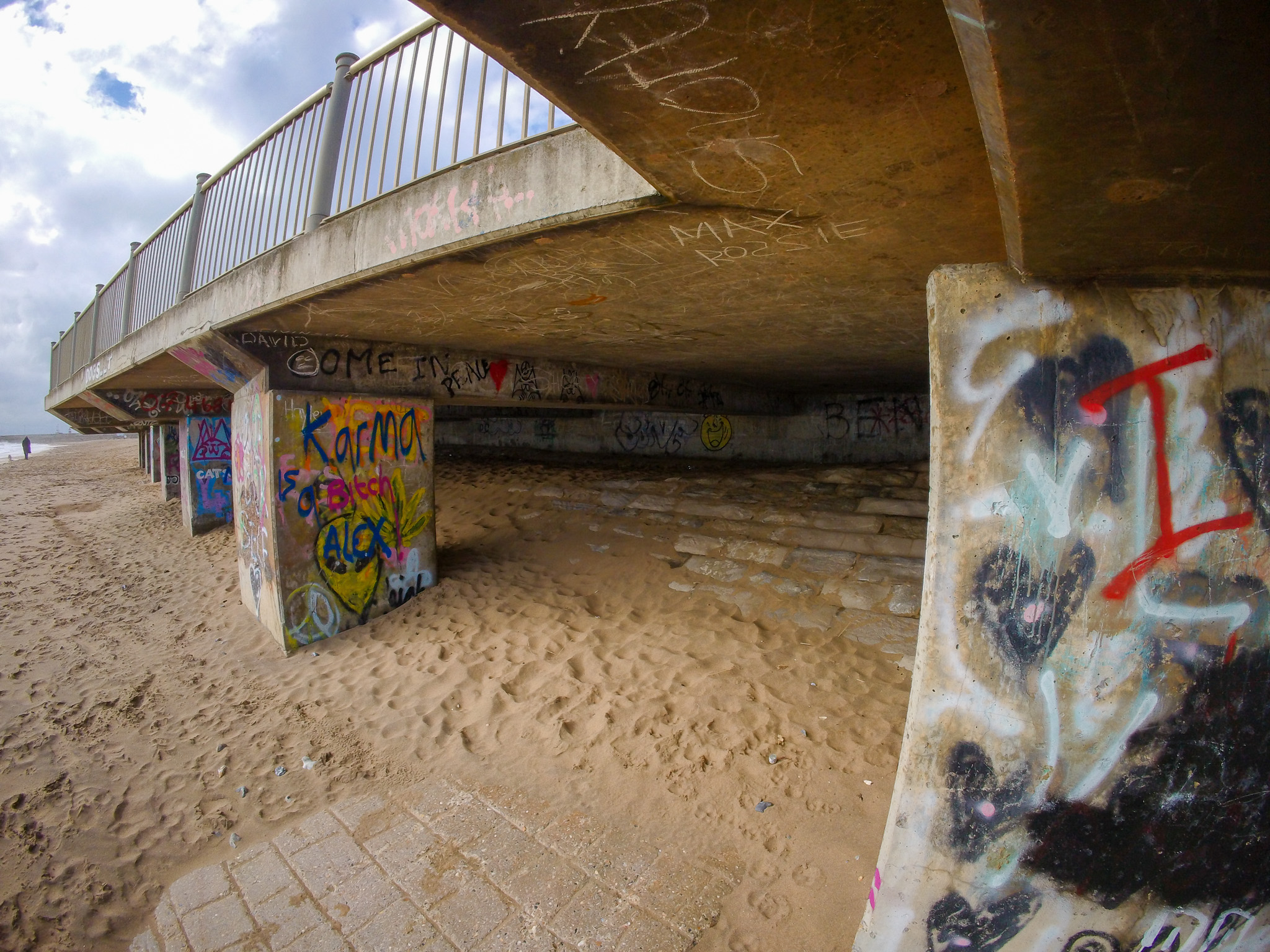
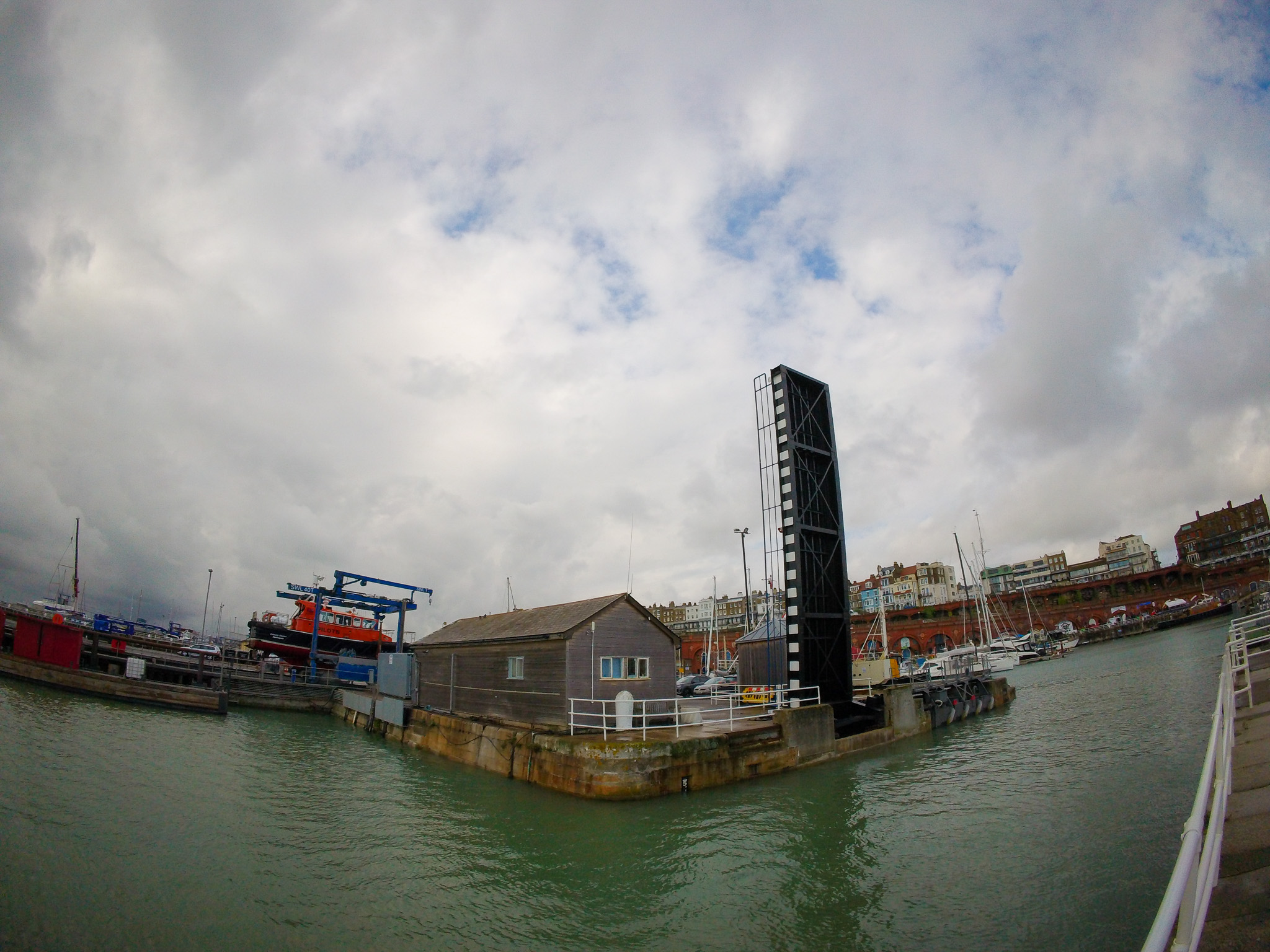
✅ You want a tiny action cam: At just 86g and measuring, 56.6 x 47.7 x 29.4mm, the Hero (2024) is a baby GoPro.
✅ You want a simple camera: Stripped back to the basics, the Hero is easy as 1, 2, 3 (literally, there's only three modes).
❌ You want GoPro's best image quality: For a similar sum, you can pick up an older Hero Black-series model that'll give you better 5.3K video quality.
❌ You're hoping for good quality audio: No option for an external mic means that you rely on the basic internal mic.
Launched alongside the Hero 13 Black, the all-new Hero (2024) is a cheap and cheerful entry-level model. It's GoPro's smallest and lightest action camera, tipping the scales at just 86g. And the baby GoPro is stripped back to the basics for beginners too, with just three shooting modes to choose from: photo, video and slow-mo. You don't get nearly the same degree of function and features as the flagship Hero Black-series, which is kind of the point, but is also a limiting factor in real world use. For one, you don't get GoPro's incredible Hypersmooth Stabilization, just electronic stabilization. To be fair, this simpler stabilization does a decent job of smoothing out your footage, while the tiny 1,225mAh battery provides surprisingly lengthy record times – we were able to get around 80 minutes of video footage during our in-depth review.
If you're hoping for the best bang for buck, the older Hero 10 Black is better value. However, many users will not make the most of the flagship series arsenal of features, and it's these people, beginners, that should be well served by the Hero (2024). We would prefer its 4K image quality to be a little better, while slow motion video is limited to just 2.7K up to 60fps. Handling-wise, there's no front screen for selfies, while waterproofing is just 5m, half that of the Hero Black series models. All that being said, the Hero fulfills its brief as a small and simple action cam.
Read our in-depth GoPro Hero (2024) review
Best value GoPro
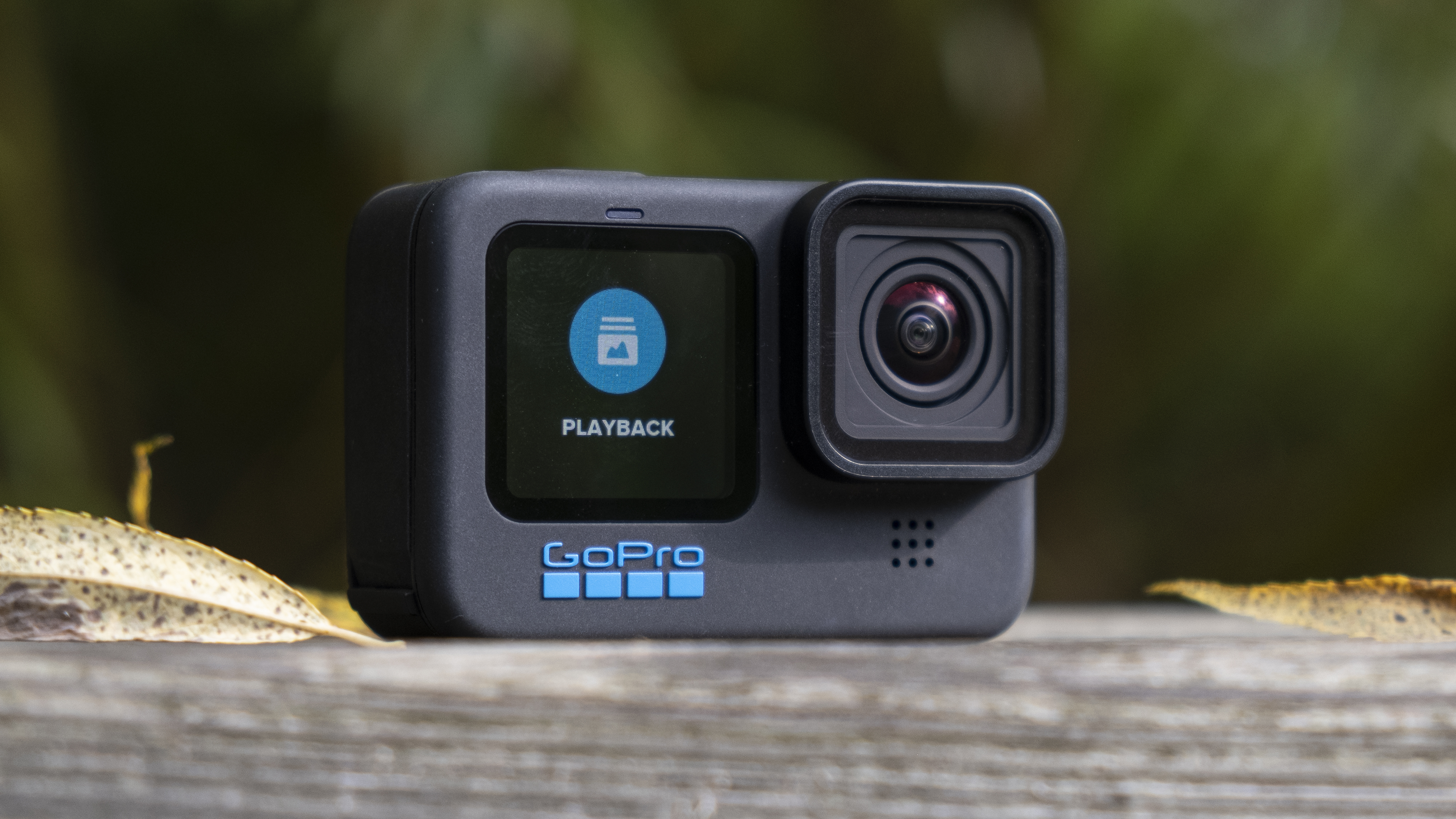

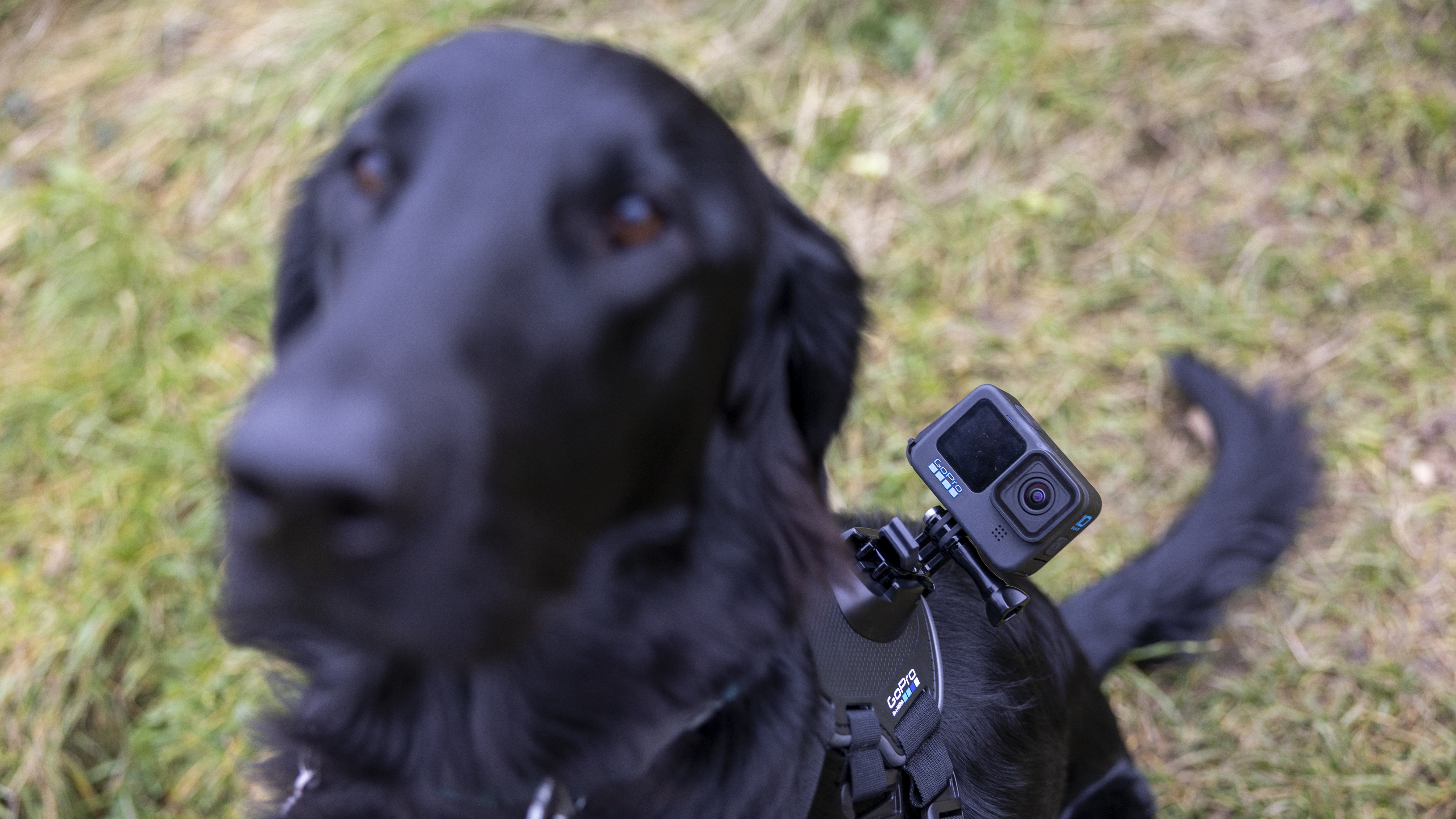
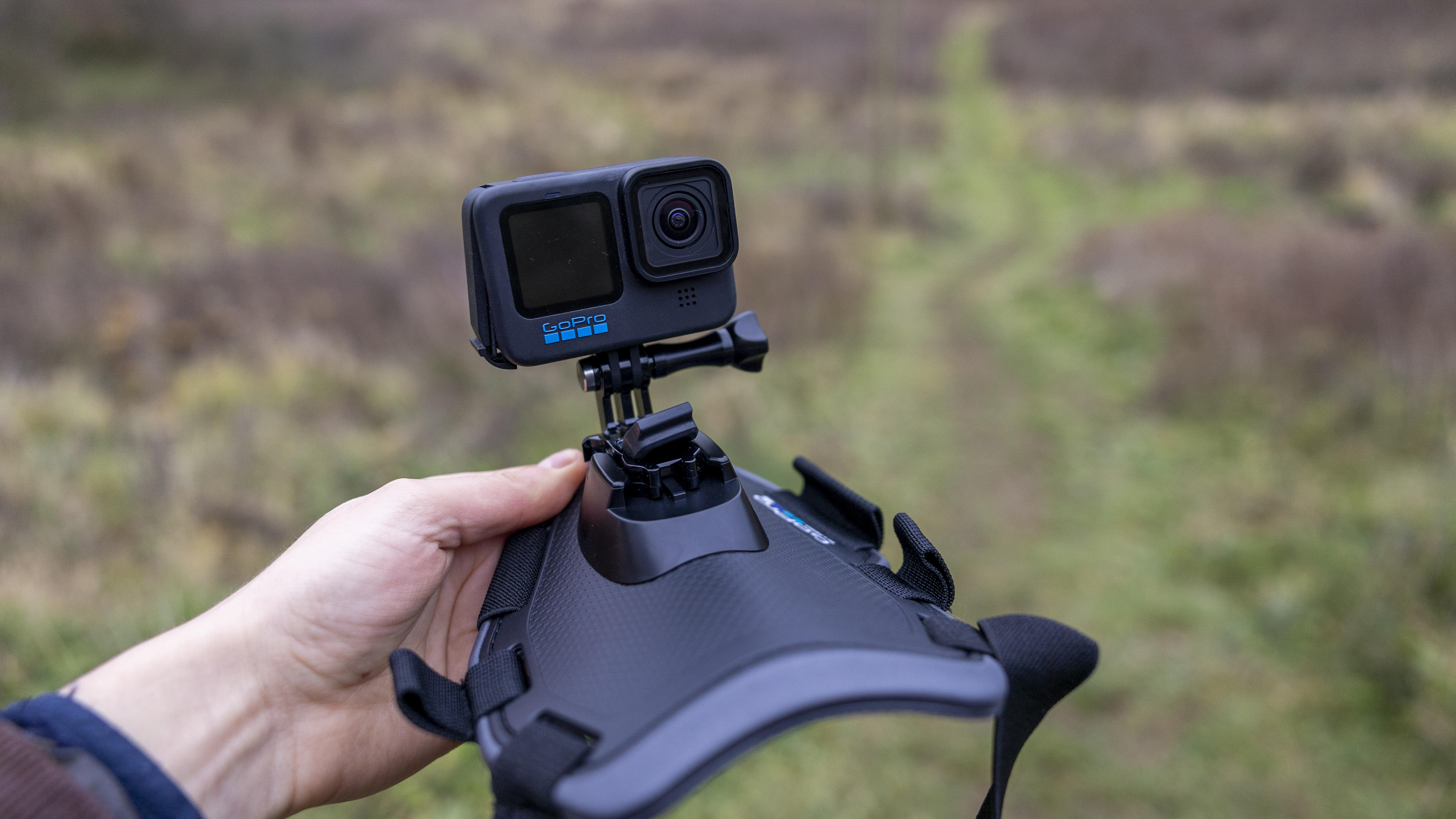
Specifications
Reasons to buy
Reasons to avoid
✅ You want a versatile, value action cam: Not far off the Hero 11 Black and with bigger price drops, the Hero 10 Black is excellent value.
✅ You enjoy shooting slo-mo videos: The 4K/120p mode is ideal for shooting cut-scenes or family frolics. This is a key advantage for this model.
❌ You want truly cinematic video: While you can squeeze excellent video from the Hero 10 Black, footage still tends to have that wide-angle look, without any pleasing bokeh.
❌ You're looking for a super cheap bargain: If you're looking for a cheap 4K action cam, there are more affordable options in our best cheap action camera guide.
Still available three years since launch, the Hero 10 Black has seen massive price drops and recently dipped below $200 / £200 for the first time – that's half the price of GoPro's latest flagship, the Hero 13 Black. At the time of its launch, the GoPro Hero 10 Black represented a much more user-friendly and refined version of its predecessor, the Hero 9 Black. It's built around the same 23MP 1/2.3-inch sensor as before, and features the same 33ft / 10m waterproofing. There are some new shooting modes, which includes new 5K/60p, 4K/120p and 2.7K/240p shooting capabilities. In our tests, we found its new slow-motion options were ideal for creating cut-scenes and b-roll footage, especially when using the Quick app to edit the results.
The touchscreen interface also proved more responsive in our review, while image quality overall looked better. The headline improvements were relatively small, but that’s to be expected when building on an already excellent model. Overall, the GoPro Hero 10 Black isn't be the cheapest action camera on the market, but it hits the sweet spot in the current GoPro line-up, offering arguably the best combination of price and features.
Read our in-depth GoPro Hero 10 Black review.
Best cheap GoPro
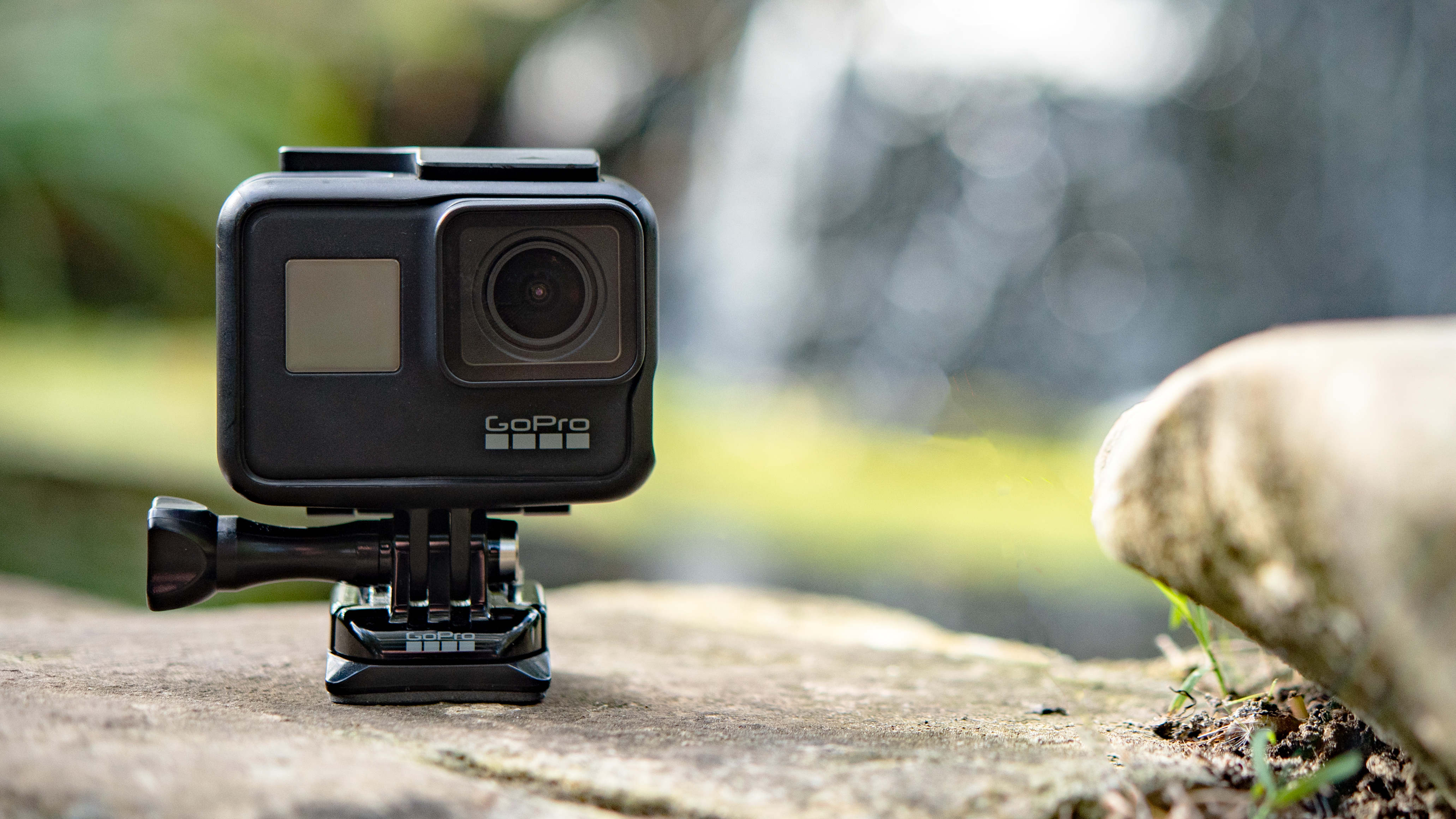
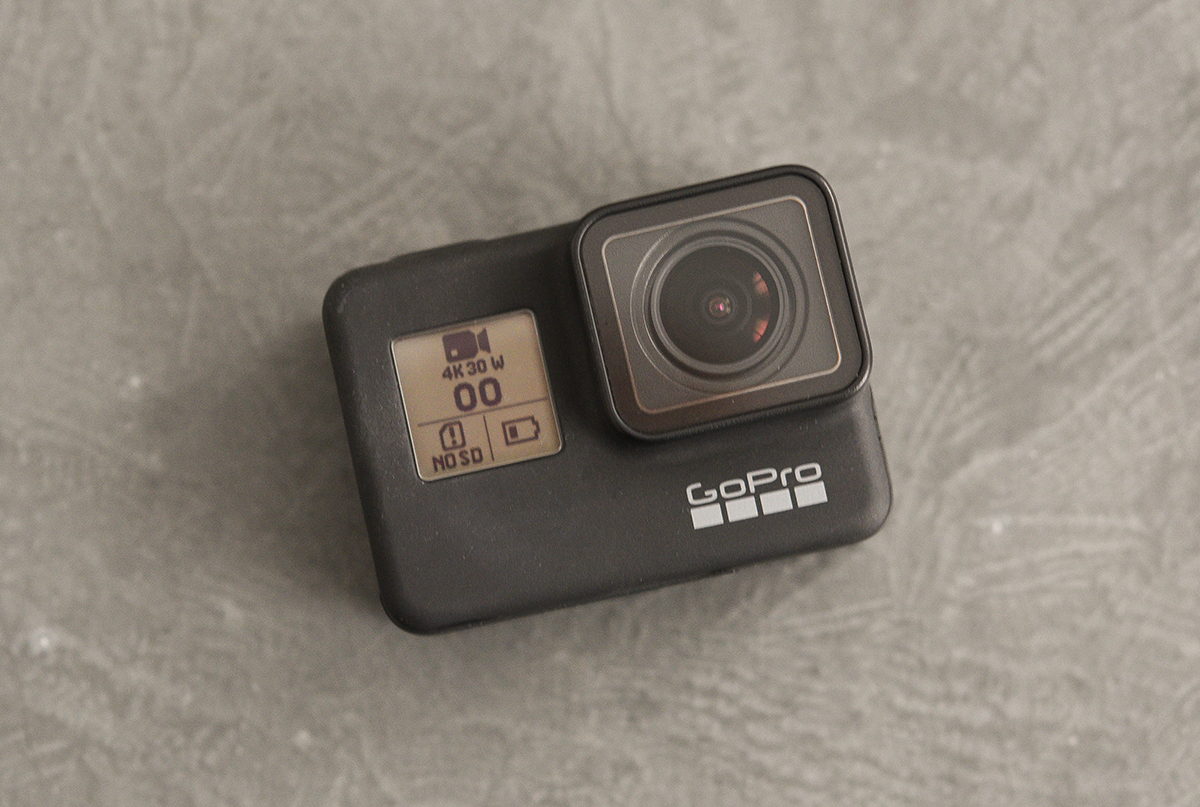
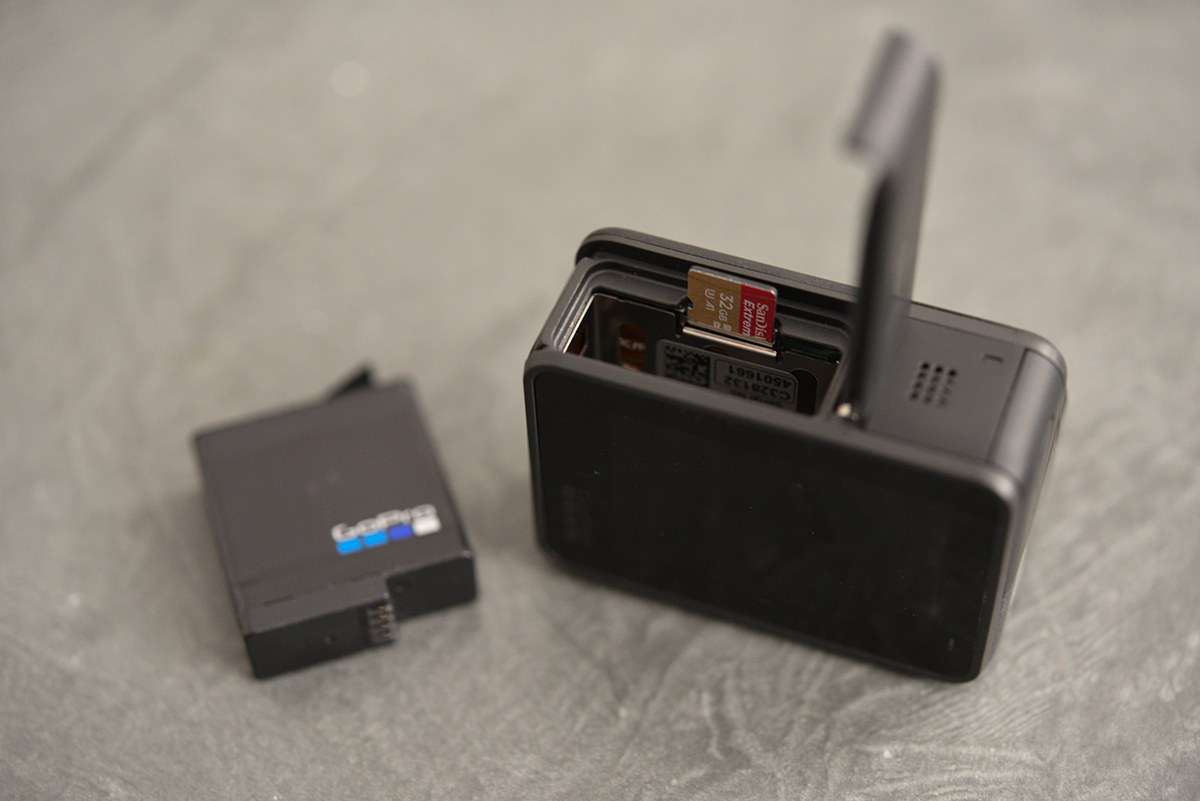
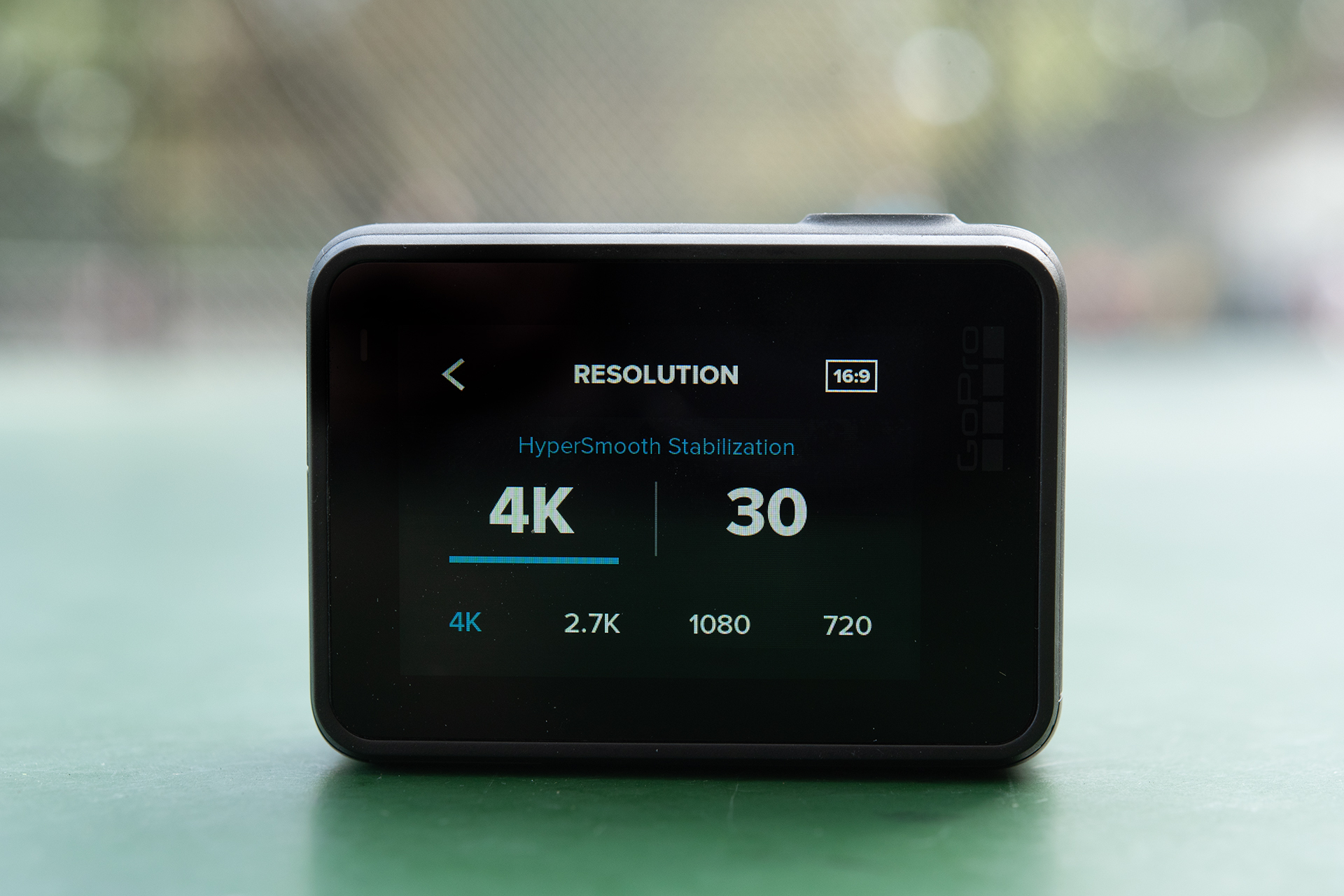
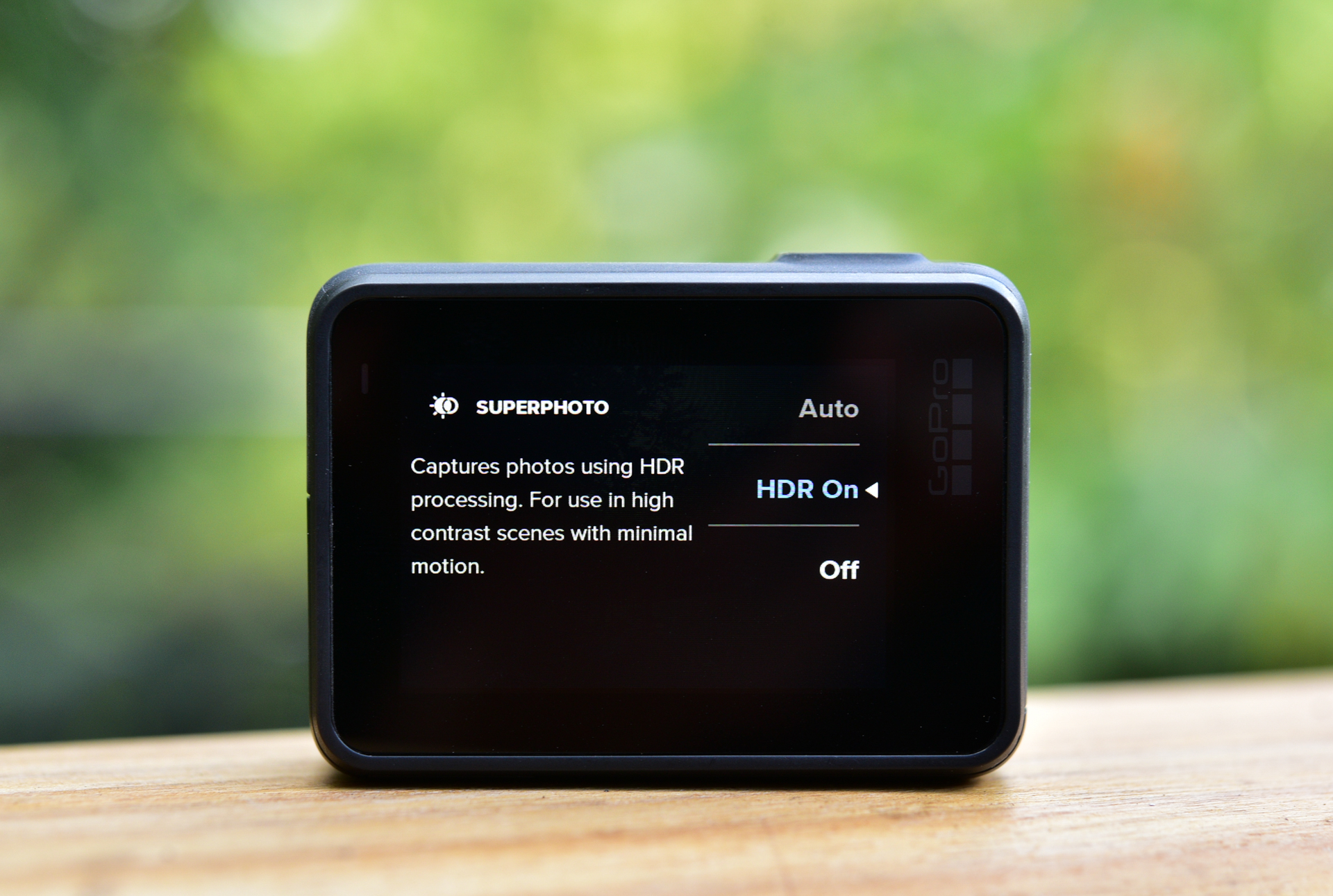
Specifications
Reasons to buy
Reasons to avoid
✅ You want a GoPro bargain: The Hero 7 Black has some excellent features and can be snapped up for a lower price than any other GoPro in this list.
✅ You want some fun: The benefit of buying a cheap action camera is that you can throw it around as much as you like without worrying if it's going to break.
❌ You want the latest specs: The Hero Black 7 lacks almost all of the features that the flagship GoPro Hero 12 Black offers.
❌ You want something that will last: As you'll probably be buying a used version of this action camera, there is no telling how long it'll actually last.
It might now be a number of generations old, but the Hero 7 Black still remains a great action camera at a really affordable price. In fact, if you can do without all the latest features then it might not only be the cheaper buy but also the better option for you. Its 4K footage is still very good and the HyperSmooth video image stabilization tech still impresses, serving up buttery smooth footage.
Throw in 10m waterproofing, a 2-inch touchscreen, voice control and raw output and you’ve got a GoPro that, even with its superior successors on the scene, is still well worth considering. You can't buy the Hero 7 Black from the GoPro site anymore, but it's available new on sites like Amazon and, given its age, you could well find a second-hand bargain.
Read our in-depth GoPro Hero 7 Black review
The best GoPro for social creators
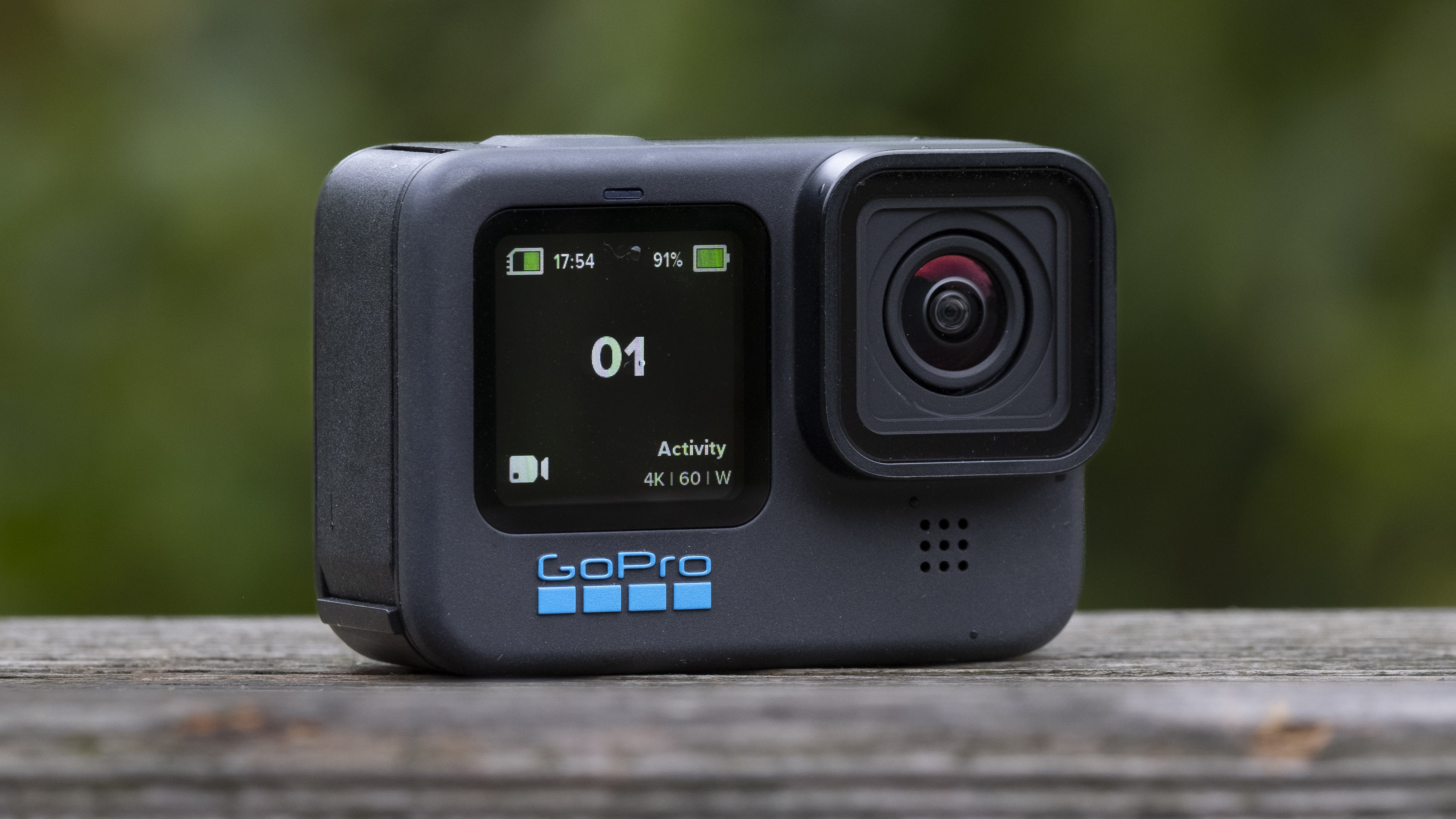
5. GoPro Hero 11 Black
Specifications
Reasons to buy
Reasons to avoid
✅ You shoot for social: Thanks to an almost-square 8:7 aspect ratio, the sensor inside the Hero 11 Black makes it more versatile when exporting video for social media.
✅ You want good value: Offering flagship features such as 10-bit video at a lower price than the latest models, the Hero 11 Black hits the sweet spot for social creators.
❌ You want external and dual-channel audio tools: This enhanced audio connectivity is only available with the flagship GoPro Hero 12 Black.
❌ You're on a budget: If you don't need the 8:7 sensor, you're better off buying one of the older GoPro Hero models to make your budget go further.
Rather than suggesting the Hero 12 Black as the best Hero 13 Black alternative, there's a case for the Hero 11 Black being a wiser choice. After all, all three models have the sensor with an 8:7 aspect ratio and 5.3K resolution video, which makes it easier to export videos in different formats – such as 9:16 for TikTok and Instagram – without losing any quality or resolution. The other headline feature is support 10-bit video, something usually found only in the best video cameras. This makes it easier for video editors to fine-tune footage and avoid issues like color banding in skies, particularly when shooting in GoPro's 'flat' color profile.
The Hero 12 Black was a disappointing update of the Hero 11 Black and most of its tweaks were for pro-users and audiofiles, plus GoPro inexplicably removed the GPS function from the latter model too. Add to that the fact the Hero 11 Black can be purchased for much less than the Hero 12 Black, while being the same user-friendly action camera with all of the GoPro hallmarks, including excellent image stabilization, and it gets our nod as the best Hero 13 Black alternative, and most affordable option for some of GoPro's best-ever action cam features.
Read our Hero 11 Black hands-on review.
Best 360-degree GoPro
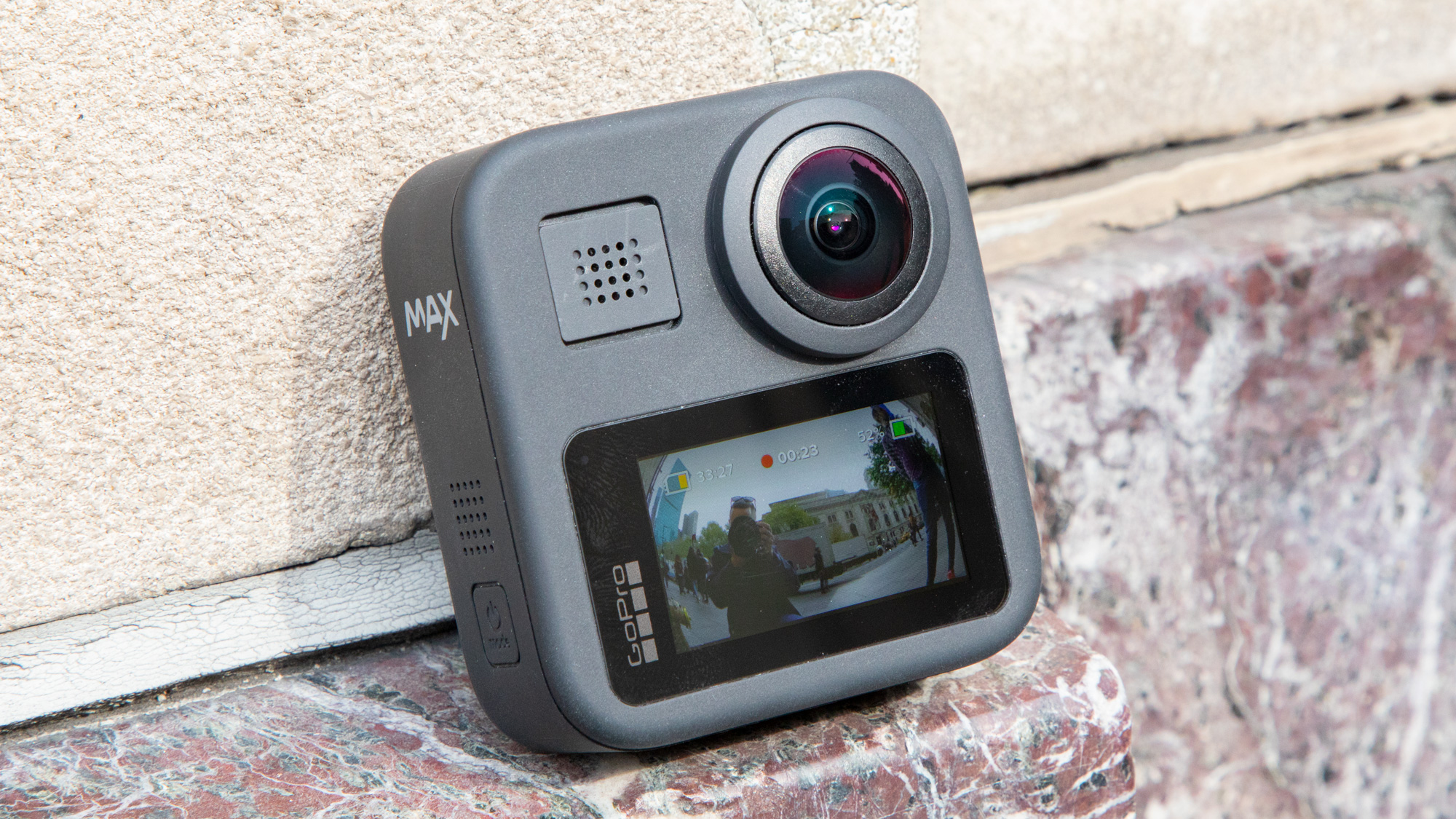
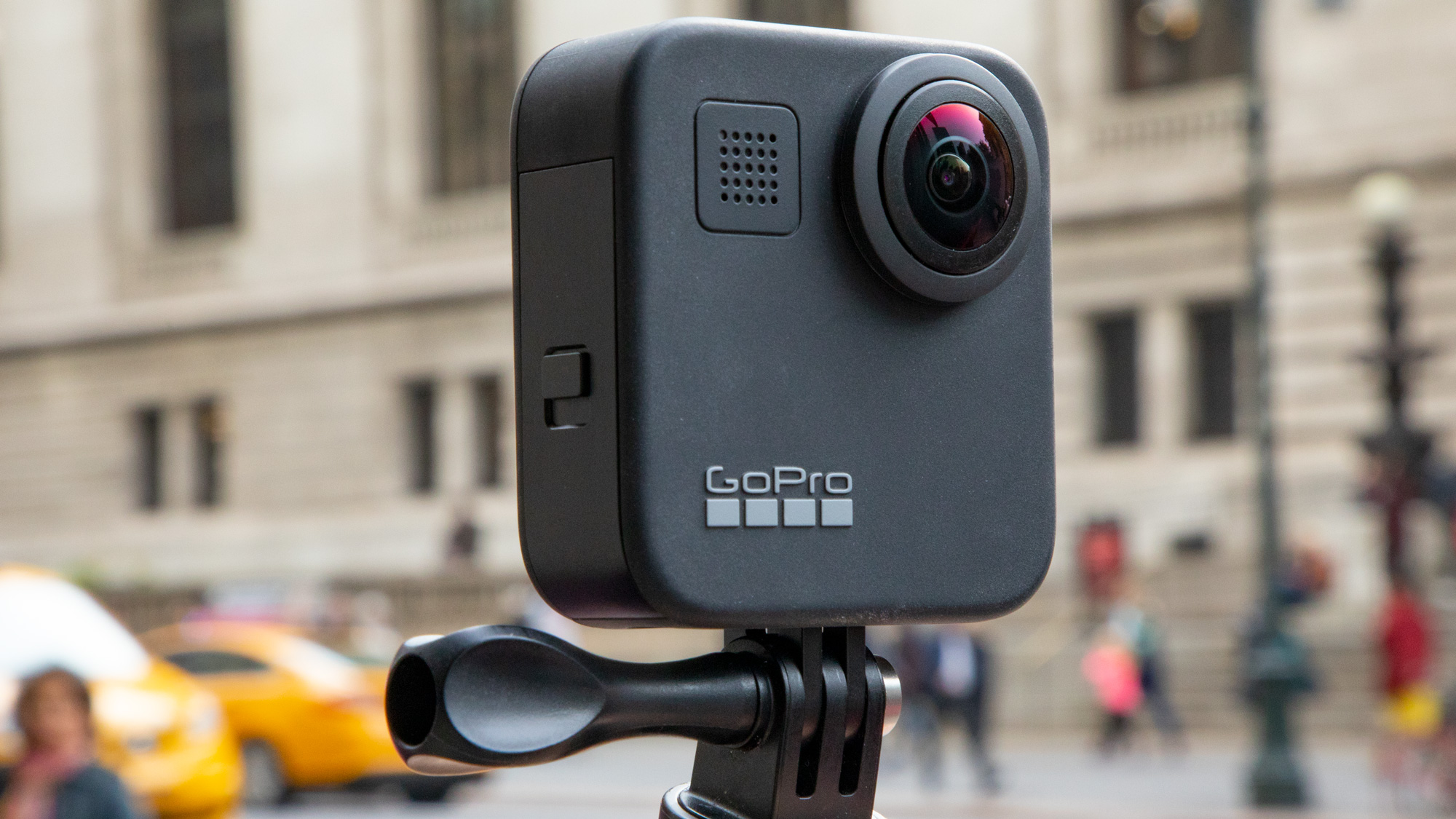

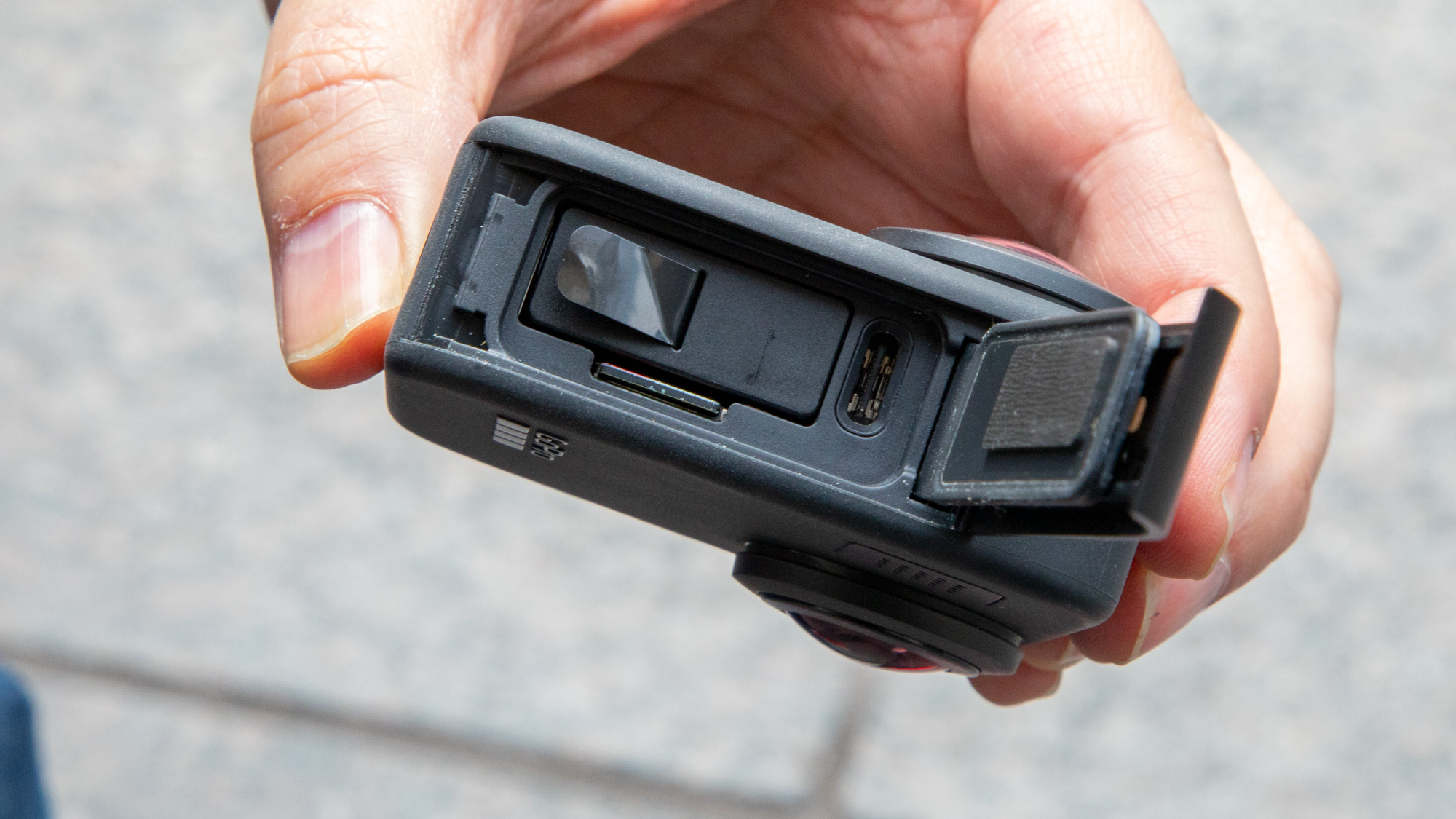
Specifications
Reasons to buy
Reasons to avoid
✅ You need 360 degree video: The GoPro Max is a boss at capturing and creating immersive 360-degree video with an easy editing workflow.
✅ You want in-camera stitching: The GoPro Max handles all the stitching on-board, so there's no manual alignment to manage afterwards.
❌ You want a great action camera: GoPro's standard Hero cameras are much better suited to a shooting traditional, flat-frame footage.
❌ You want high res video footage: This action camera is specifically designed for 360 degree video so the resolution of standard video is not so good.
The GoPro Max uses two 180-degree fisheye lenses to capture anything in its direct line of sight. These two hemispherical video files are then stitched together automatically, which is a massive timesaver, and the GoPro smartphone app lets you edit and publish spherical media from start to finish on your phone. In our review, we found that this shooting process expands the types of shots you can create, especially when recording action. It saves you from worrying about getting everything in-shot and lets you focus on what you’re actually doing.
The Max also benefits from decent 16ft / 5m water resistance, in-built retractable mounting fingers and is now compact enough to be compatible with GoPro’s entire range of mounting solutions. To round out the top-line features, the Max has a six-microphone audio array that captures a truly three-dimensional soundscape. The additional microphones also provide a surplus of audio information that can be used to cancel out background noise and hone in on voices or other desirable sounds. It's GoPro's best 360-degree camera but a little long-in-the-tooth now. Its successor, the Max 2, was revealed to be in the pipeline by GoPro but has been hit been several delays. If you're in no rush and want a new GoPro 360-degree camera, it should be worth waiting for.
Read our in-depth GoPro Max review
How to choose the best GoPro for you
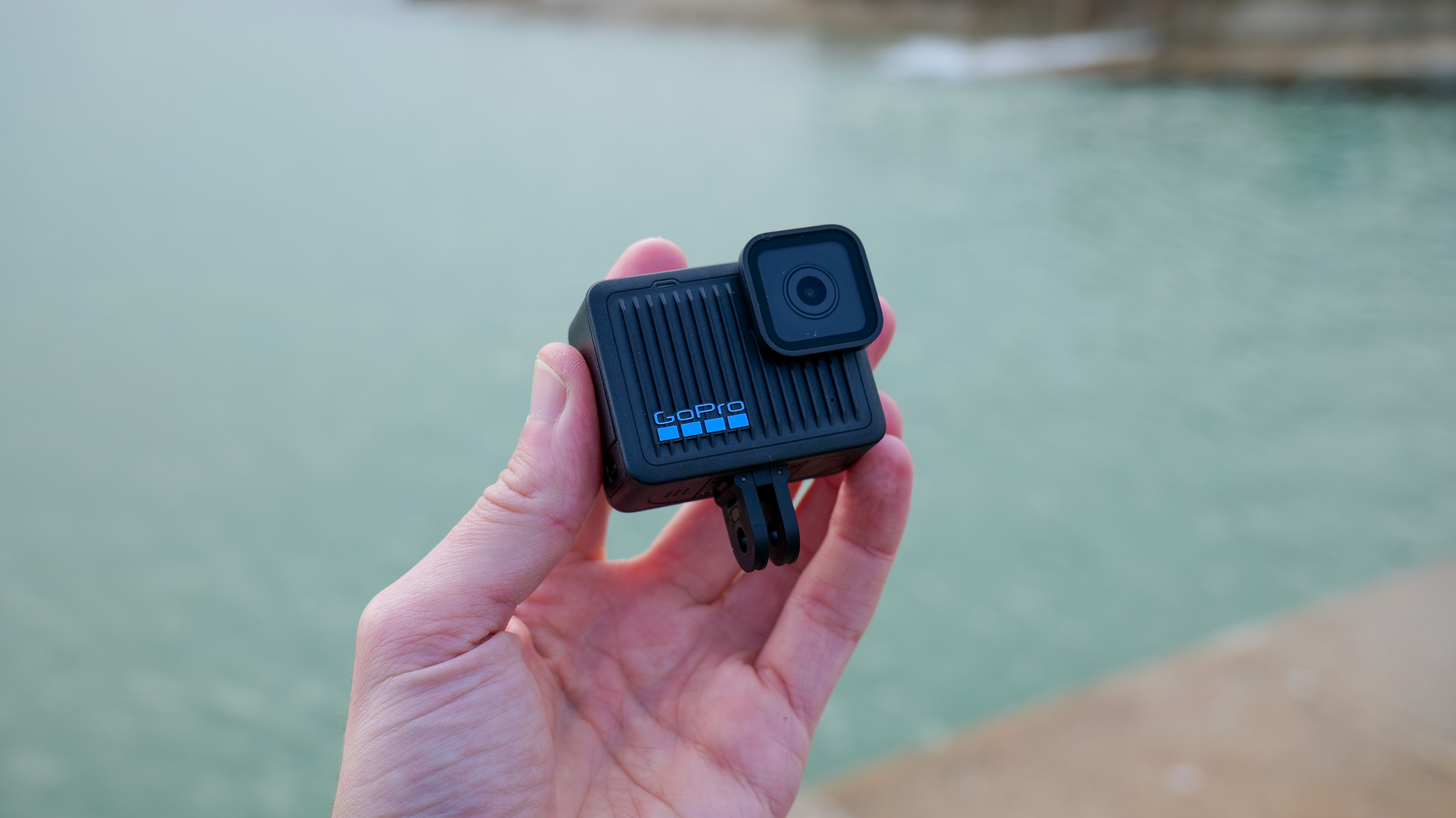
How to choose the best GoPro for you
With such a long line of GoPro models to choose from, finding the right one can be tricky.
Resolution
The most recent GoPro action cameras are capable of shooting the sharpest footage (up to 5.3K). That said, GoPro cameras have been capable of recording 5K footage since 2021, so while older models don’t necessarily offer the latest cutting-edge features, you don’t need to shell out for the most recent model to get sharp video.
Image stabilization
The latest models feature GoPro's most advanced HyperSmooth stabilization and horizon-leveling smarts for super steady footage in all conditions. If your activities aren't going to push your action camera to the limit though, older versions of the system will suit you fine. The GoPro Hero 7 Black (launched in 2017) was the first to offer HyperSmooth stabilization.
Live streaming
Eager to stream? Every GoPro model back to the GoPro Hero 7 back supports live streaming – and GoPro subscribers can even create private stream links to share directly with friends, family and fans. You’ll need a minimum of 1,000 subscribers to stream to YouTube.
Mounting
More recent GoPro models have included a few genuinely useful upgrades. Built-in mounting fingers make it much easier to attach your action cam to different mounts – or fold them away for use as a tidy vlogging tool.
Accessories
If you’d like the option to enhance your shooting package with modular accessories – such as an LED light or an improved mic for clearer audio quality – then look for a GoPro with support for Media Mods.
360 video
Keen to record 360-degree footage? The GoPro Max is the best option for capturing fully immersive 360 video.
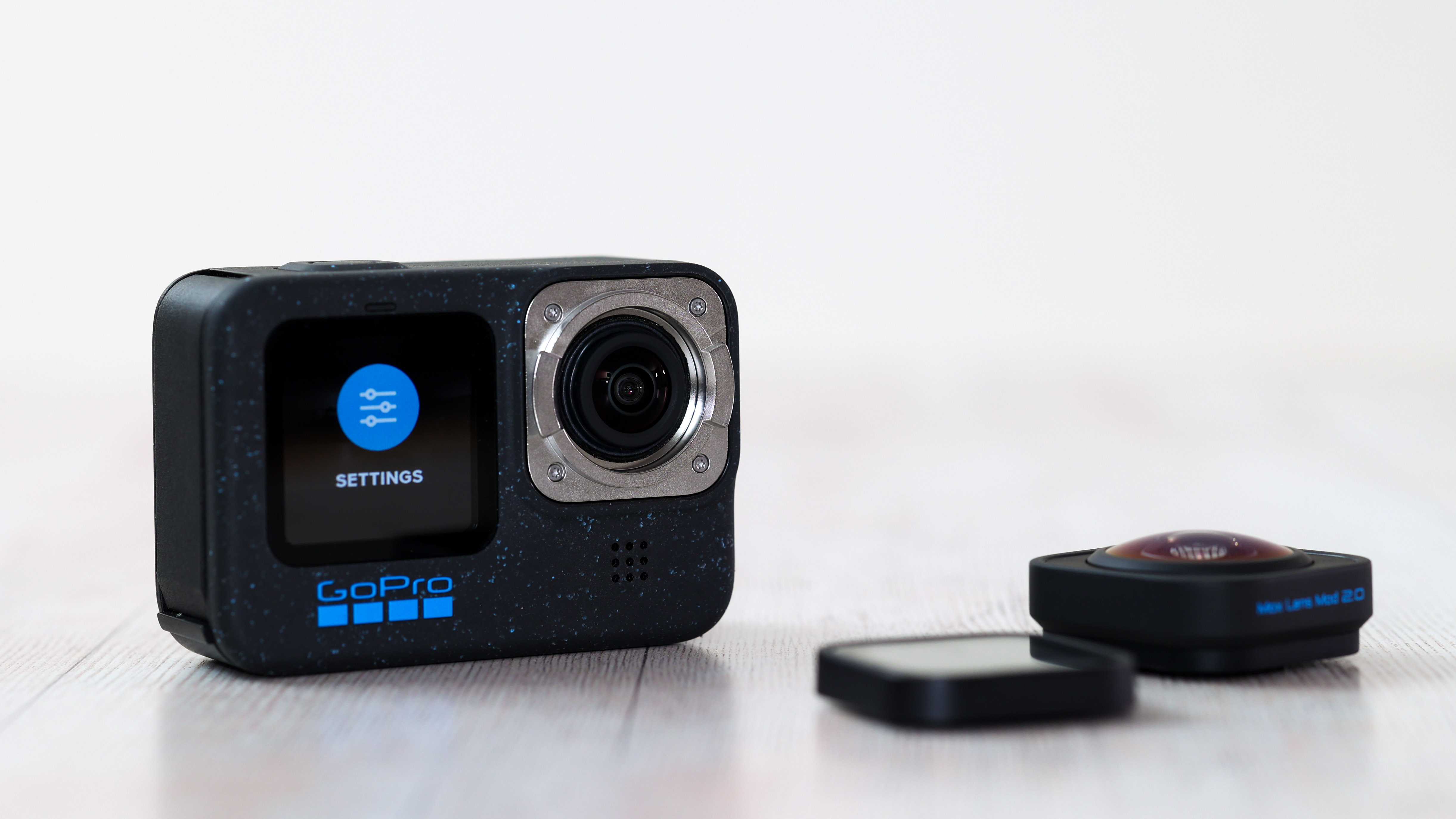
What SD card do I need for a GoPro?
SD memory cards come in a handful of sizes. Most compact, DSLR and mirrorless cameras use standard SD cards, which are the size of a postage stamp. GoPro cameras use microSD cards. These memory cards are much smaller and they are the same format used by most smartphones with expandable storage.
So you’ll need a microSD card for your GoPro. You’ll often find one bundled in if you buy a new GoPro. Capacity is important, particularly if you’ll be shooting a lot of footage before transferring it to your smartphone or laptop. Every GoPro after the Hero7 Black (including the Max) can support memory cards with up to 512GB of storage space, which should be enough to record up to 15 hours of 4K footage at 60fps.
Just as important is a memory card’s transfer speed rating. This refers to how fast footage can be recorded to the card. It’s important if you’re planning to shoot at 4K or sharper: the card needs to be quick enough to save the footage as it’s created. For the GoPro Hero 10 Black, look for a memory card with at least the v30 or UHS-3 rating. For the Hero 9 Black, Hero 8 Black, Hero 7 Black and Max, the minimum requirement is a microSD card with a Class 10 or UHS-1 rating.
Not sure which microSD card is the best for your GoPro? Sandisk’s Extreme, Extreme Plus and Extreme Pro models are recommended by GoPro, as is Lexar’s Professional 1066x Silver Series. For a full list, check out GoPro's official SD cards that will work with GoPro cameras page.
How we test GoPro cameras
GoPros are among the toughest cameras around, so we properly put them through their paces to make sure they live up to their rugged billing – and can shoot excellent video and stills, too.
We take each one through a range of real-world tests including cycling, swimming and, if possible, an experience like an adventure course. These not only give us a good idea of each model's ability to withstand the elements, but how easy they are to operate in difficult conditions.
When it comes to footage, we record in a variety of resolutions and frame-rates to help gauge each action camera's strengths, and review these clips on a calibrated monitor. We look at default color reproduction and noise levels in shadows and highlights, and look out for any common image quality issues including clipping, softness, barrel distortion and over-zealous processing.
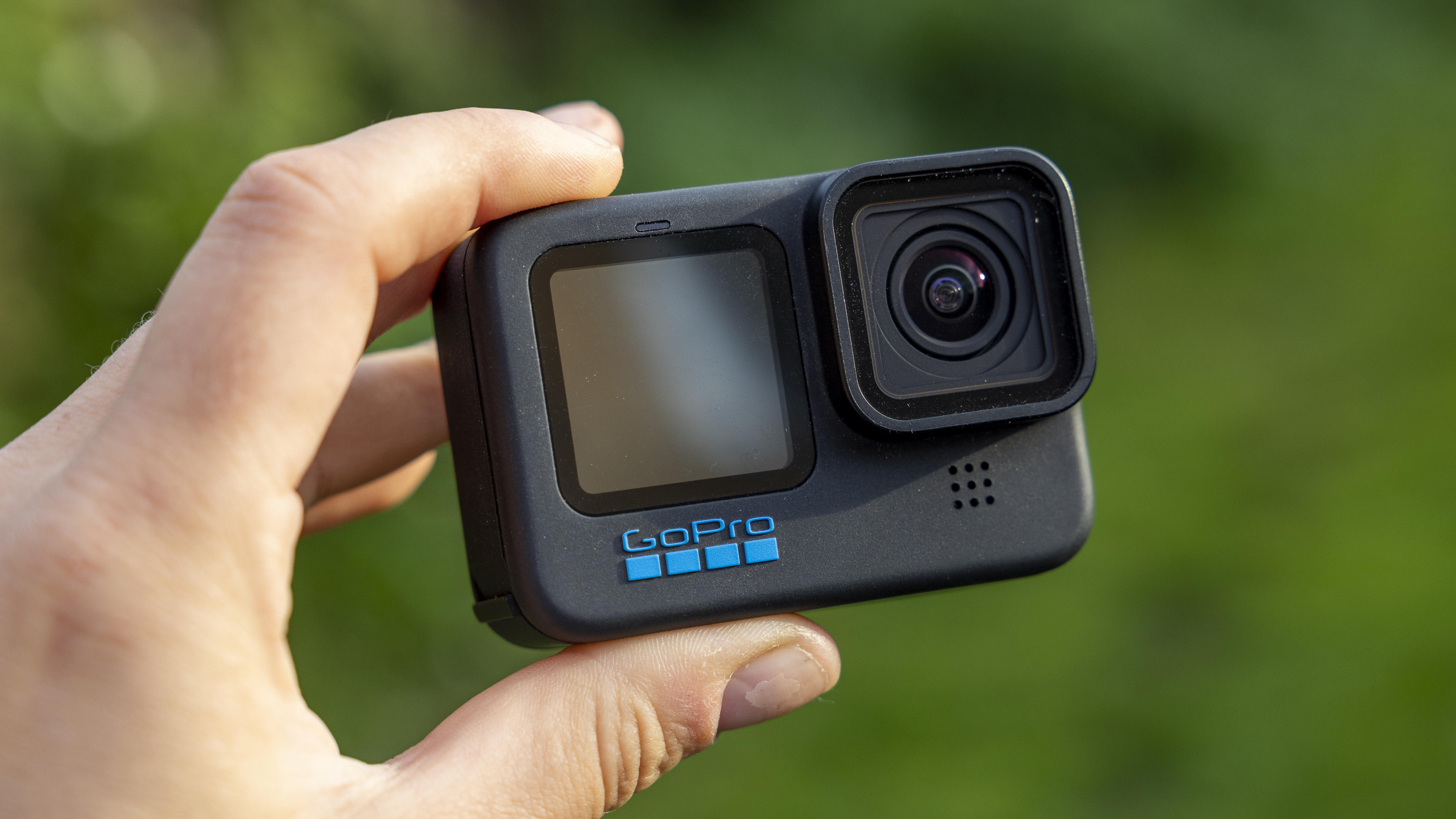
We go through a similar process to analyze each GoPro's image stabilization (called HyperSmooth in its most recent models), which is crucial to maintaining image quality during movement, and look at the quality of any special shooting modes too, including slo-mo and timelapses.
For battery life tests, we continuously record at different resolutions and frame-rates. We note down both how long the action cams lasts and when it has to shut down due to overheating. Lastly, we evaluate how user-friendly each GoPro is, by testing both their touchscreen interfaces and companion apps.
Sign up for breaking news, reviews, opinion, top tech deals, and more.

Tim is the Cameras editor at TechRadar. He has enjoyed more than 15 years in the photo video industry with most of those in the world of tech journalism. During his time as Deputy Technical Editor with Amateur Photographer, as a freelancer and consequently editor at Tech Radar, Tim has developed a deeply technical knowledge and practical experience with cameras, educating others through news, reviews and features. He’s also worked in video production for Studio 44 with clients including Canon, and volunteers his spare time to consult a non-profit, diverse stories team based in Nairobi. Tim is curious, a keen creative, avid footballer and runner, and moderate flat white drinker who has lived in Kenya and believes we have much to enjoy and learn from each other.
- Mark WilsonSenior news editor
- Paul HattonFreelance writer
- Chris Rowlands
